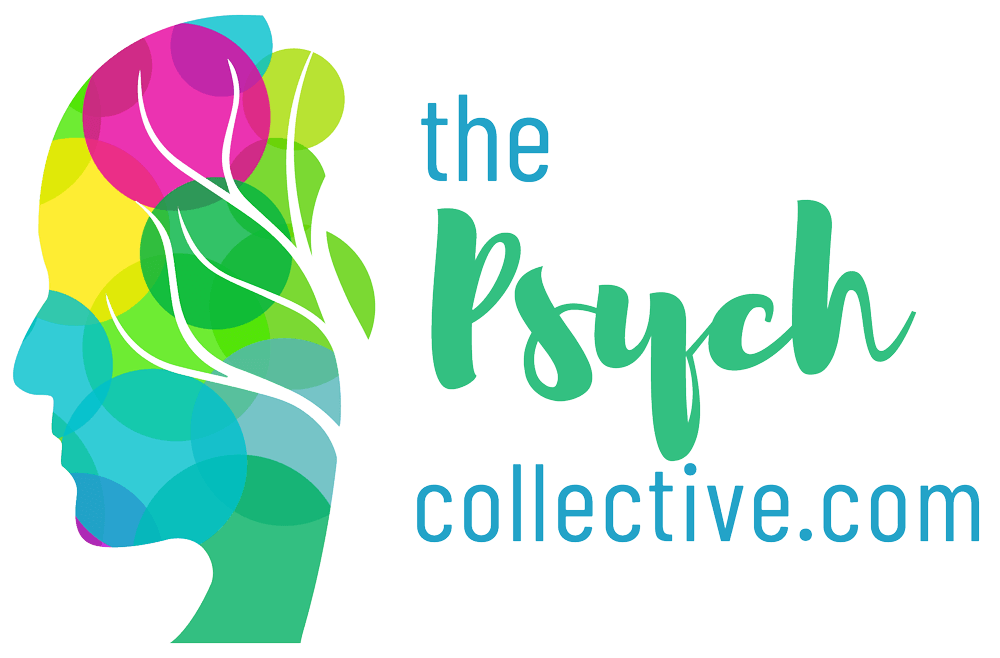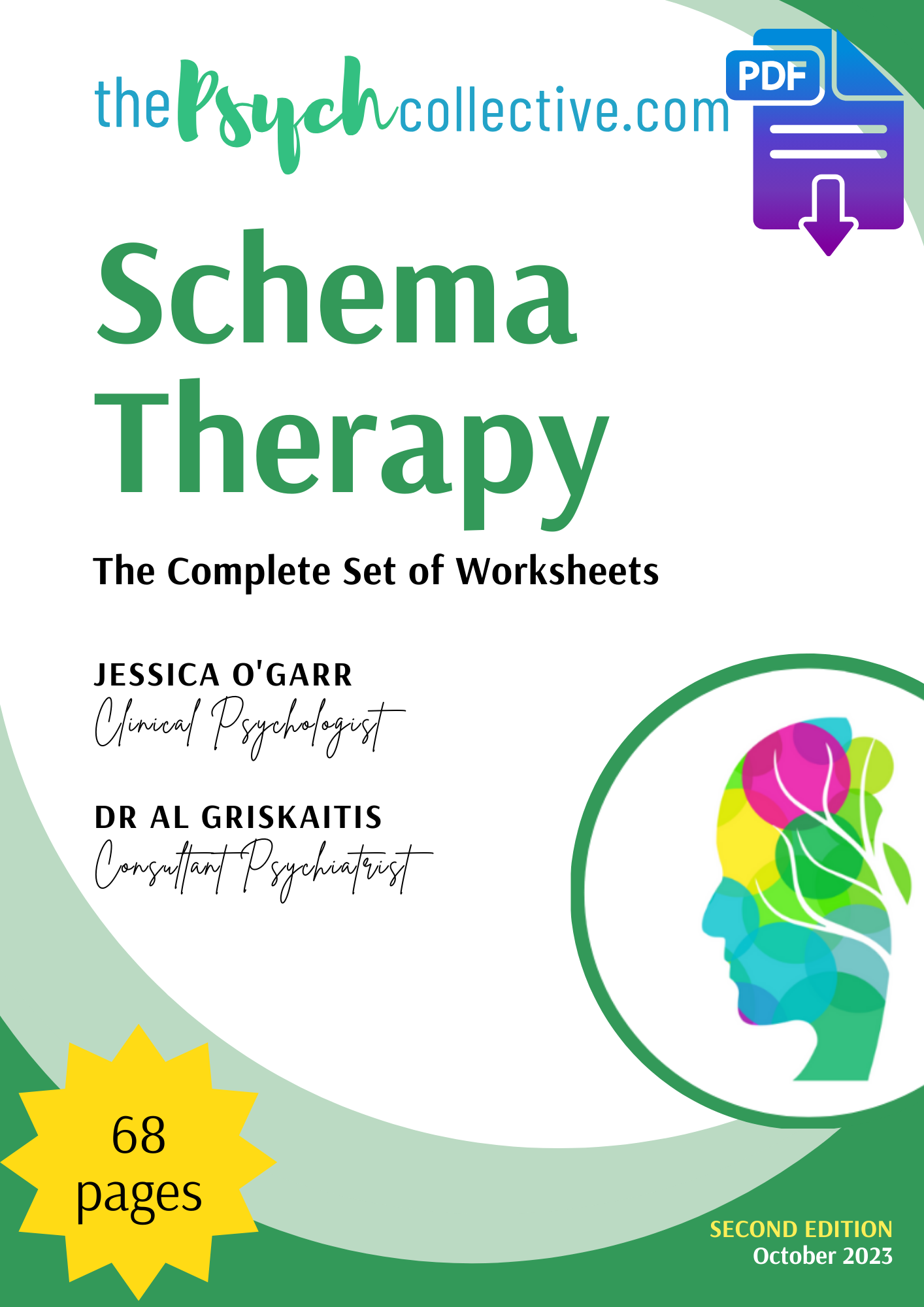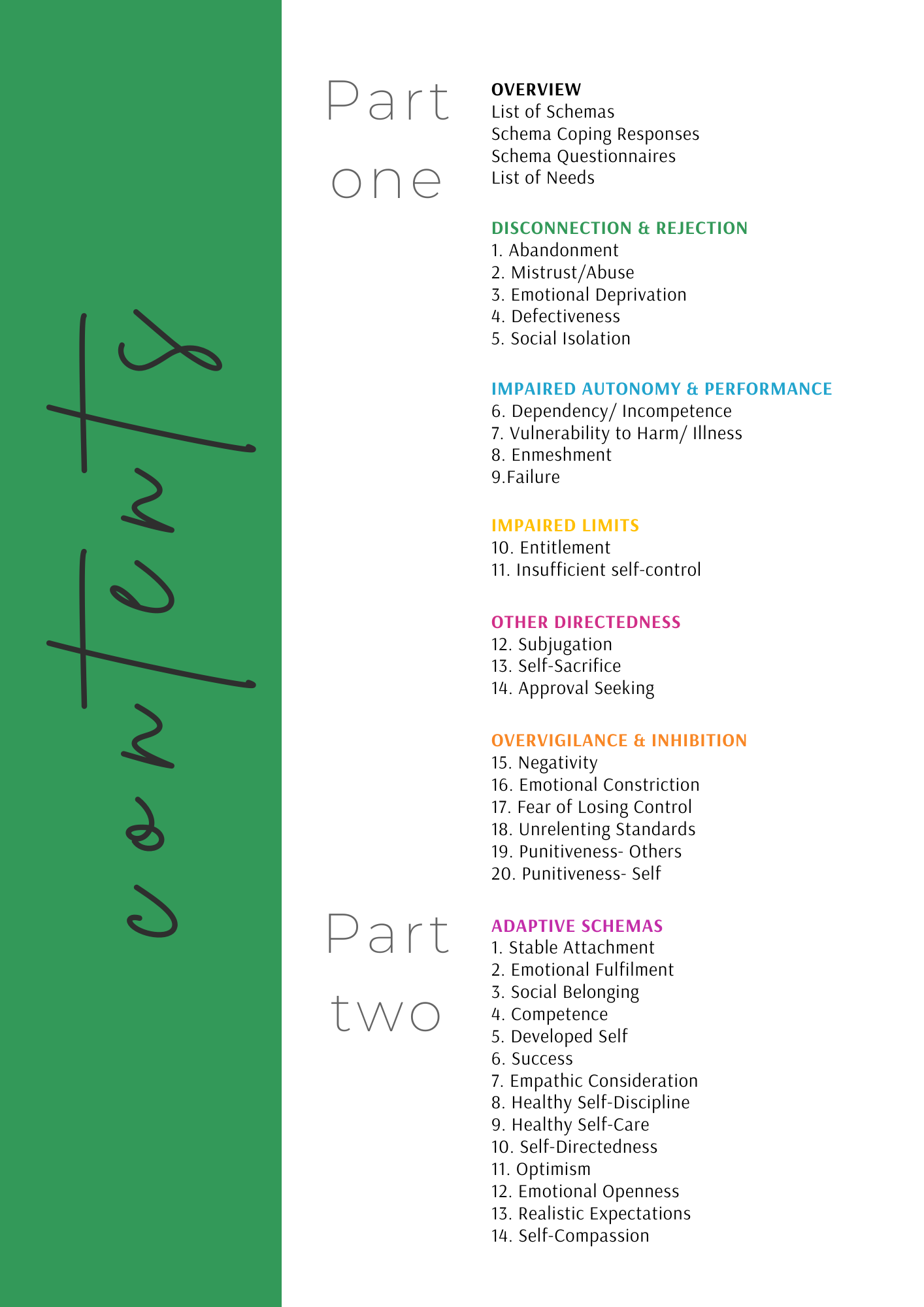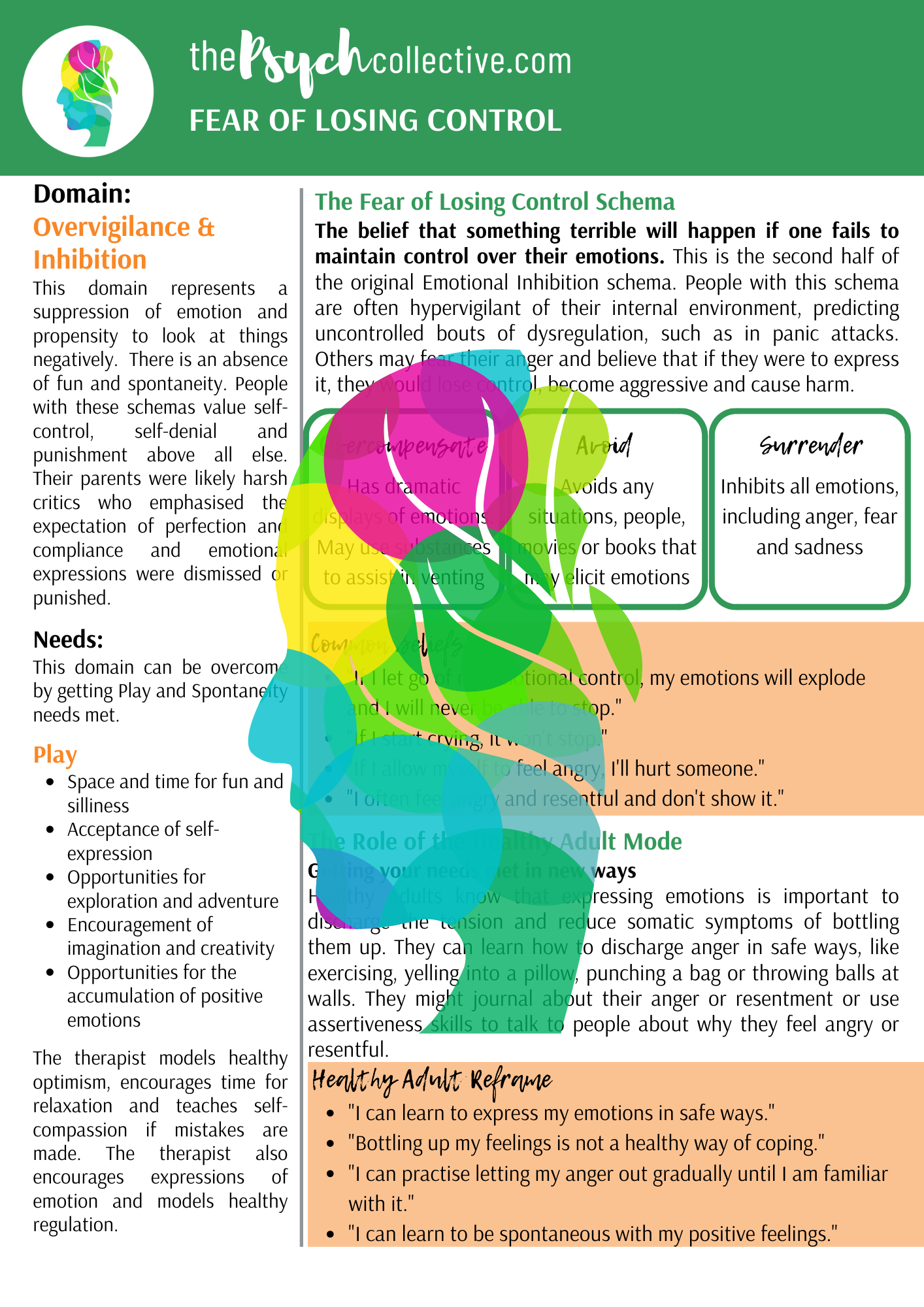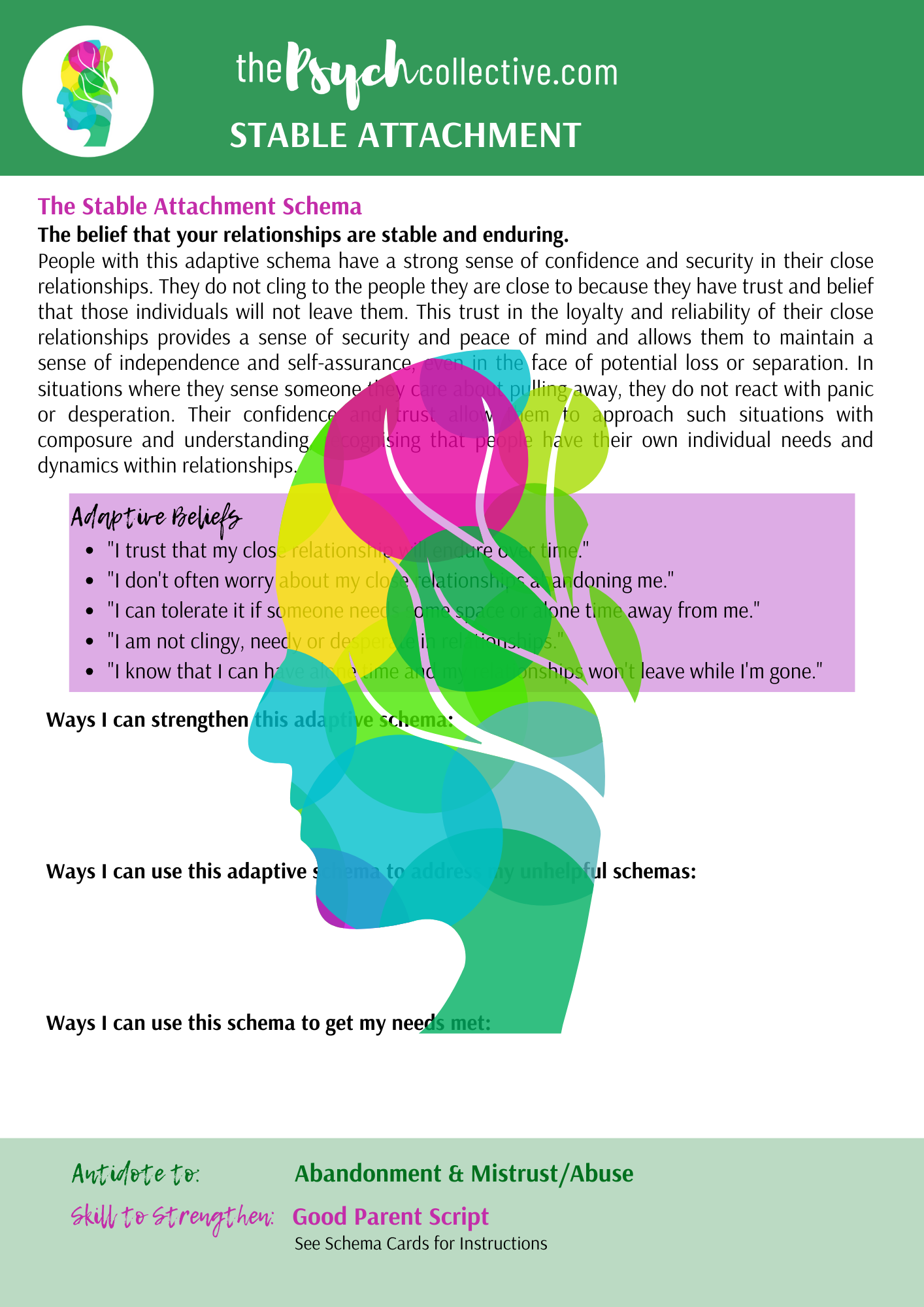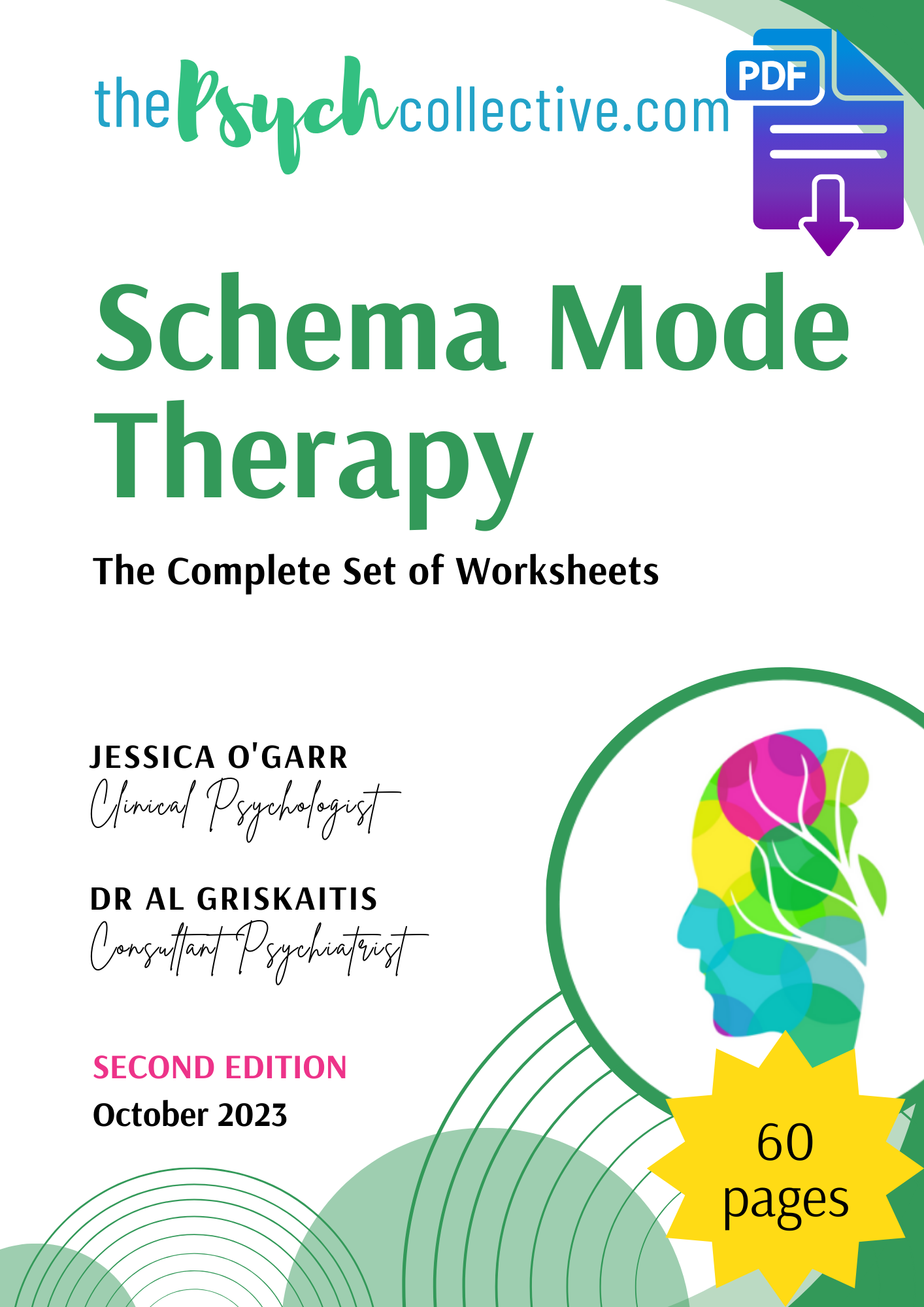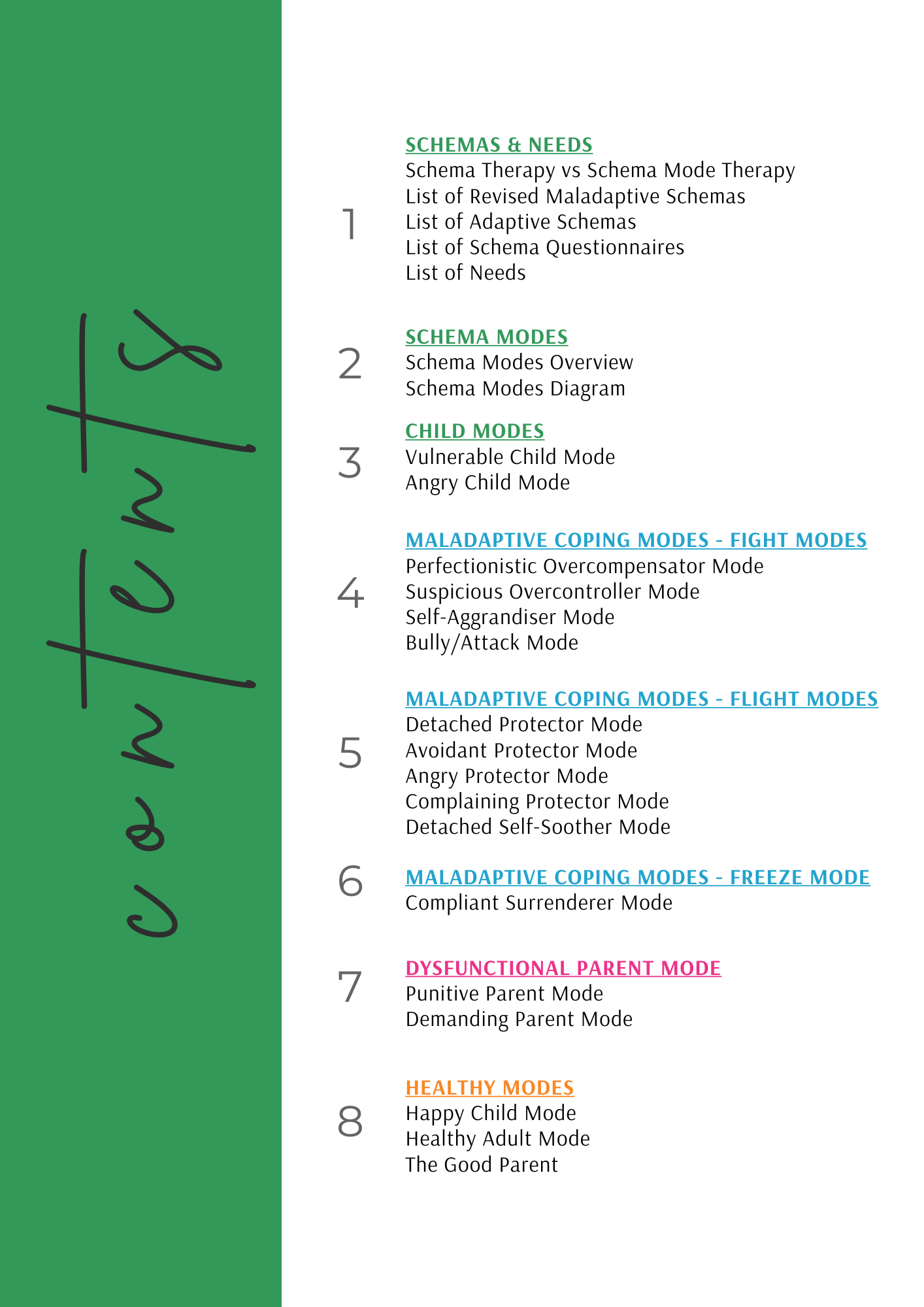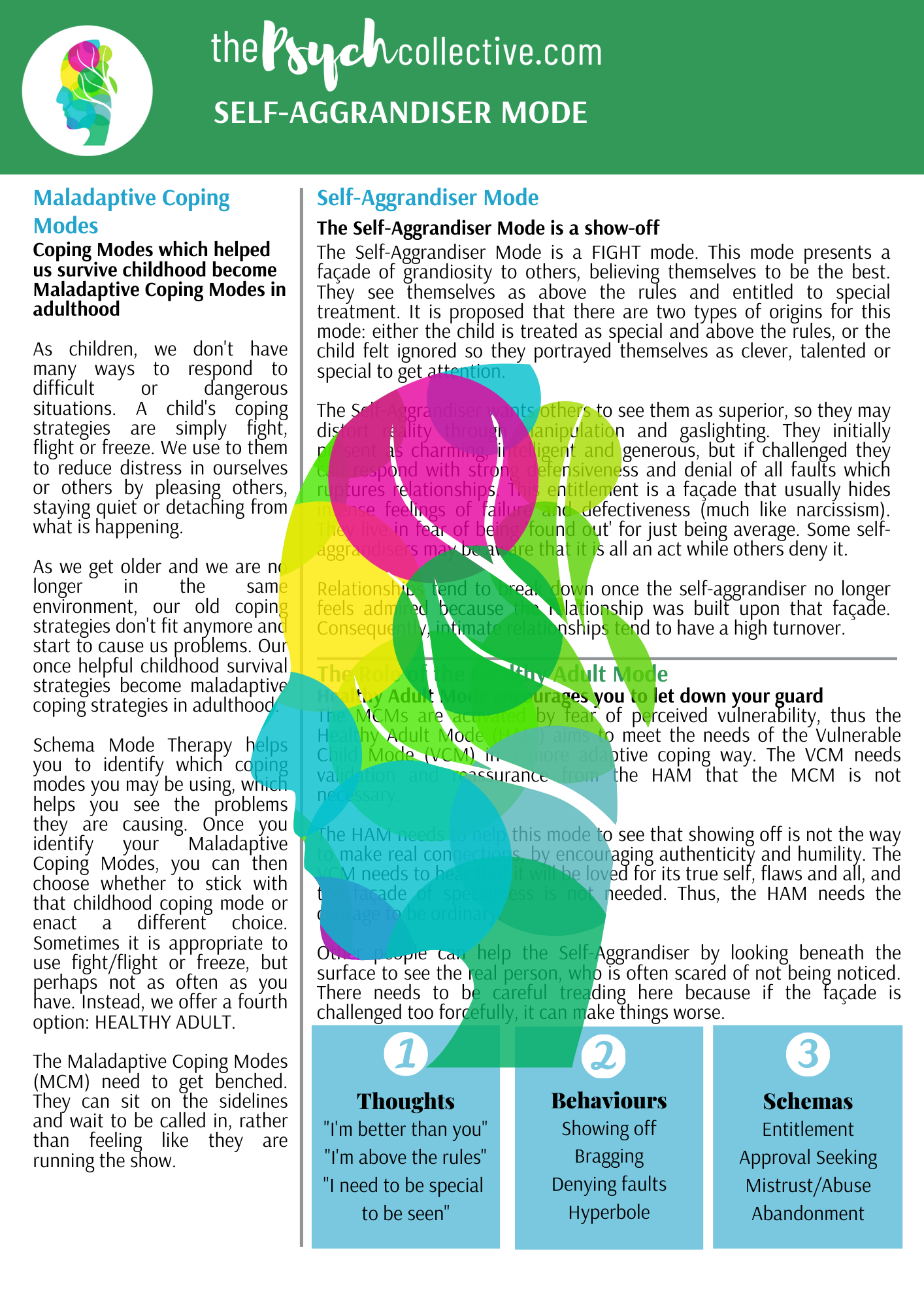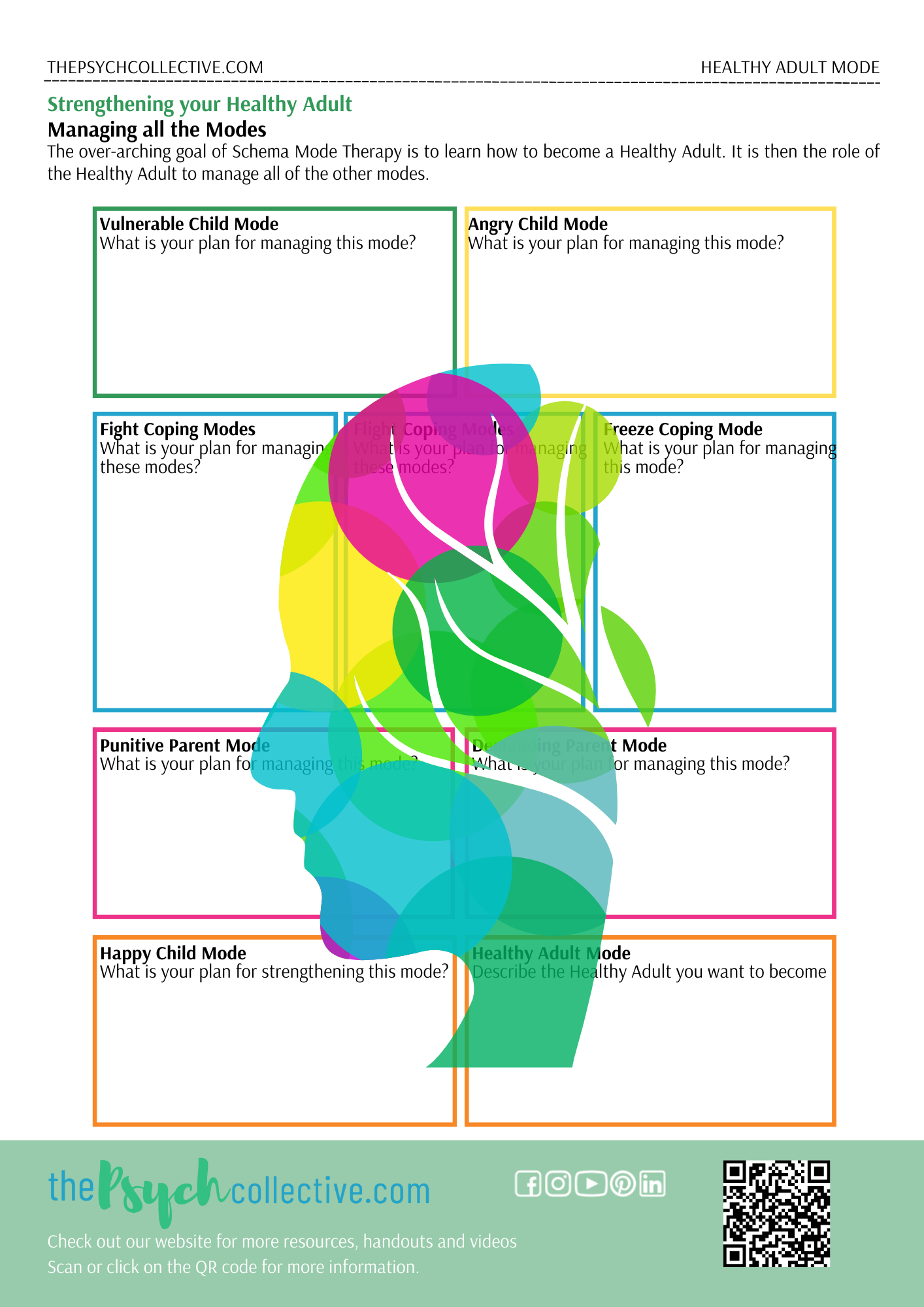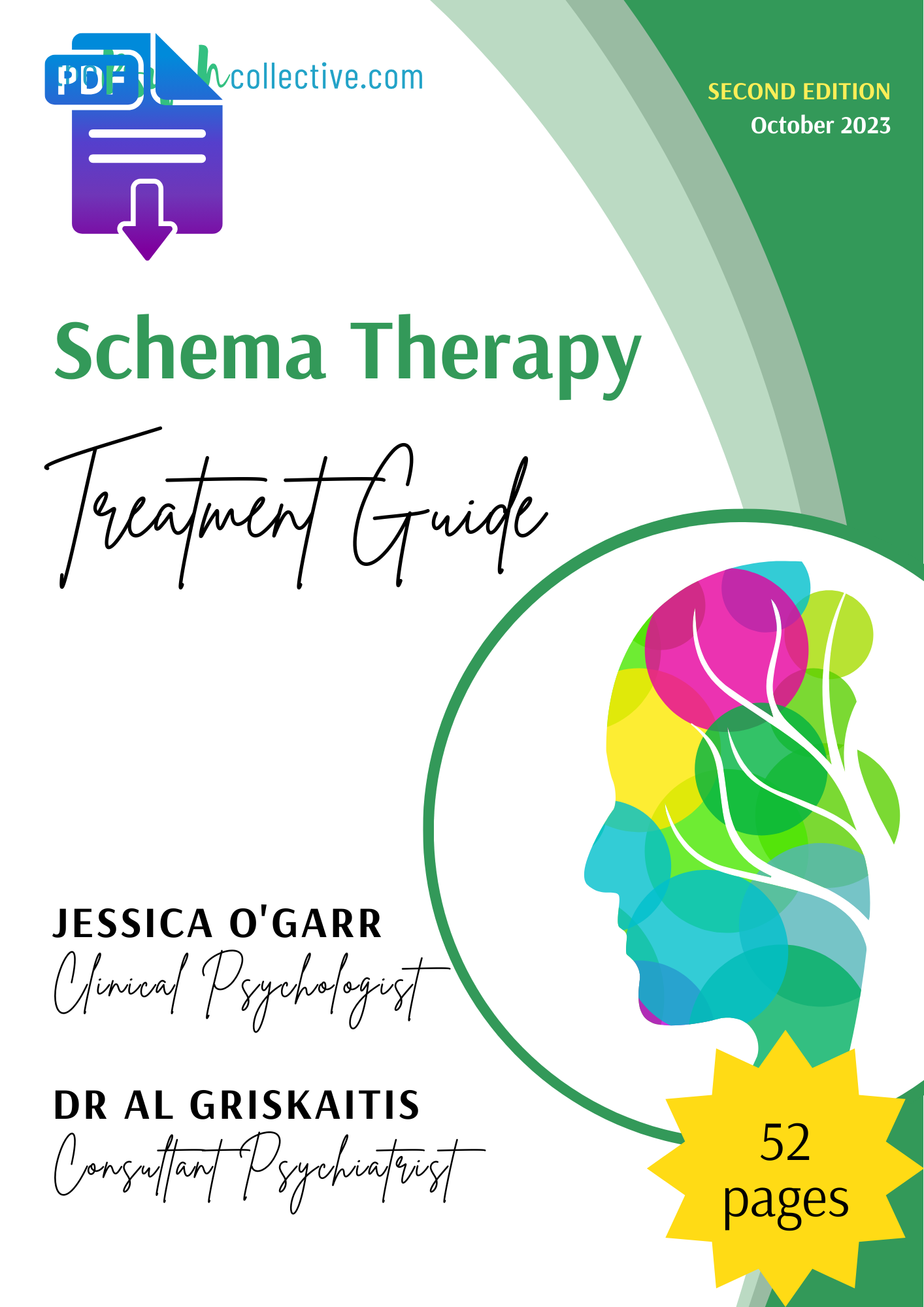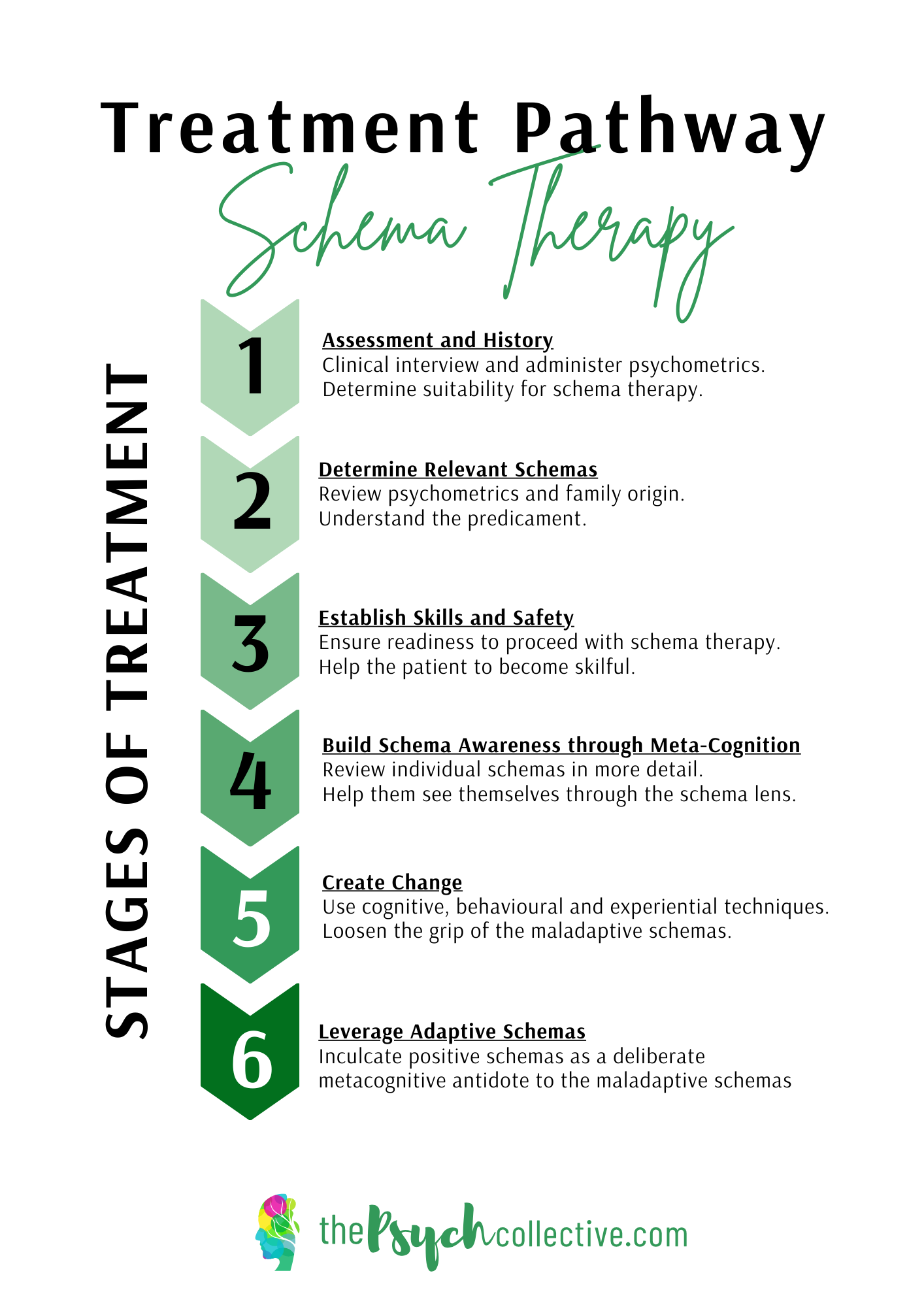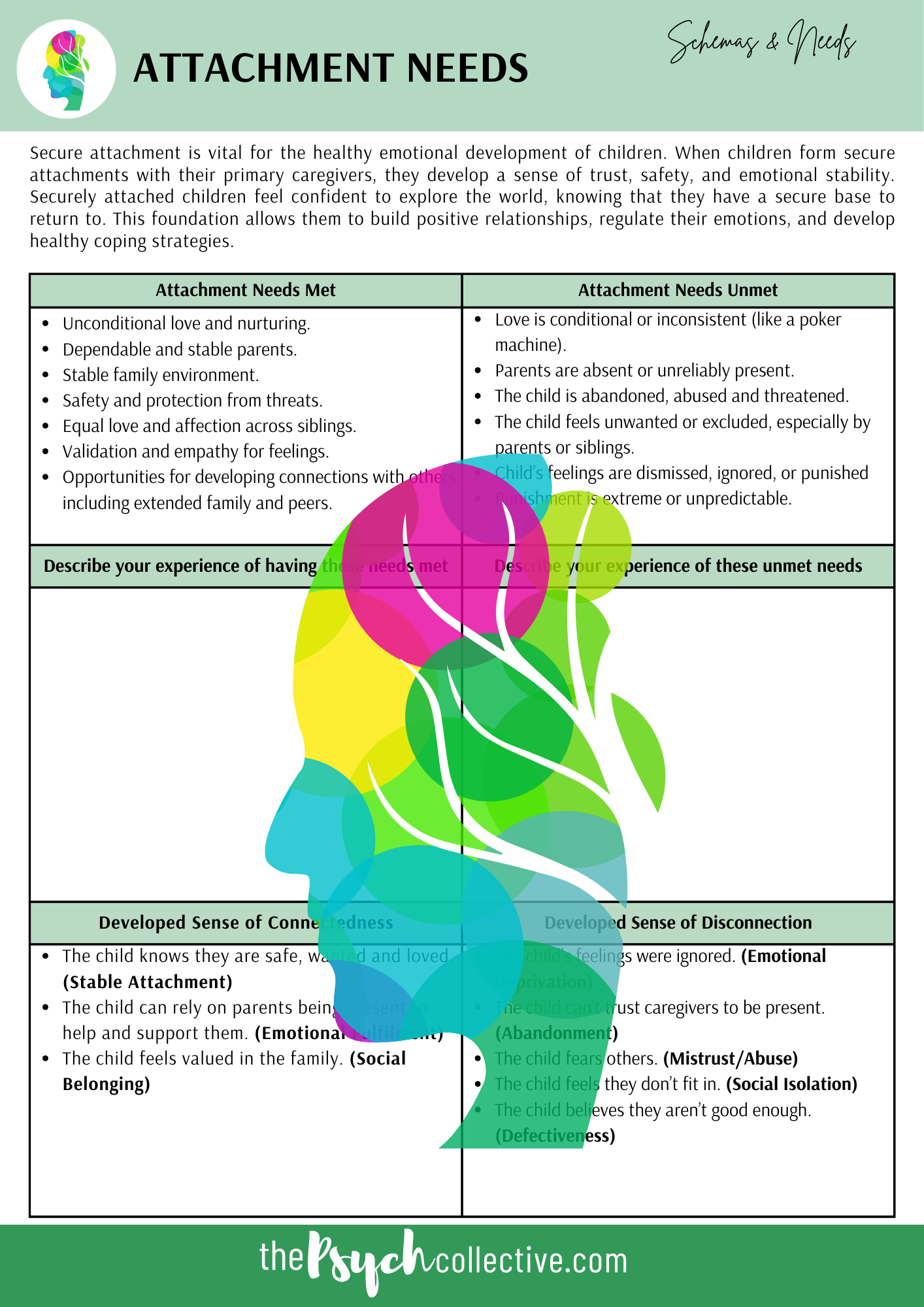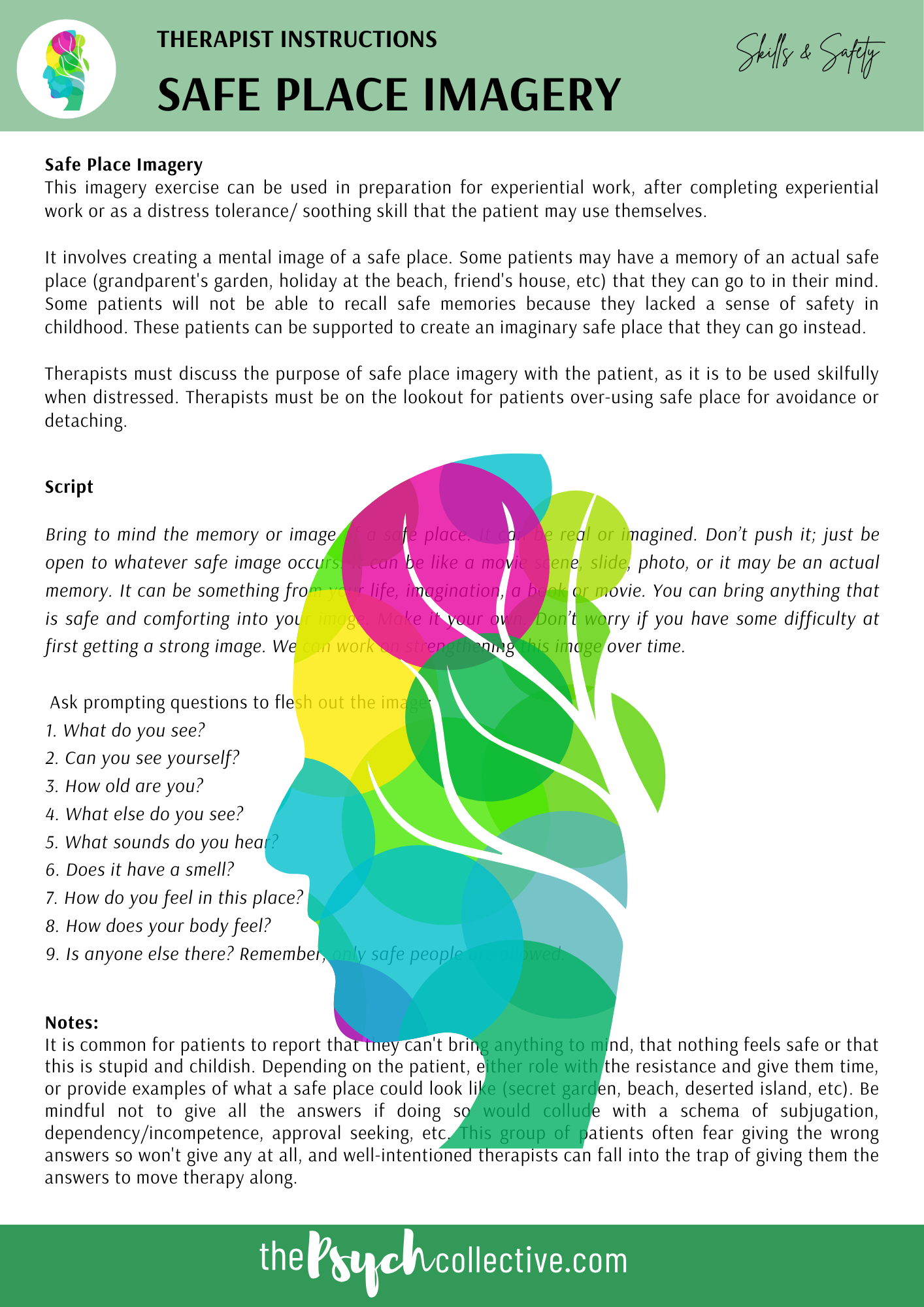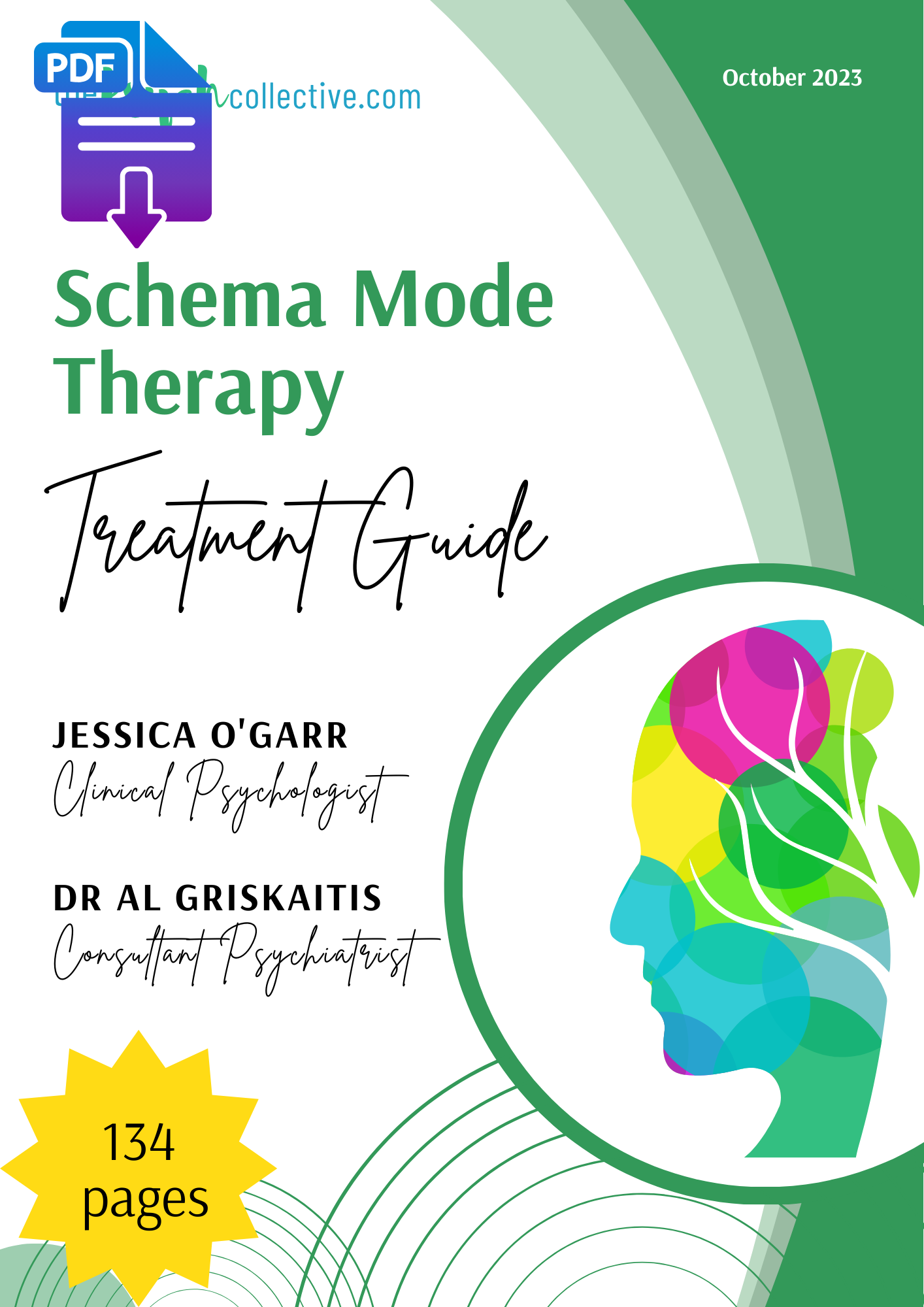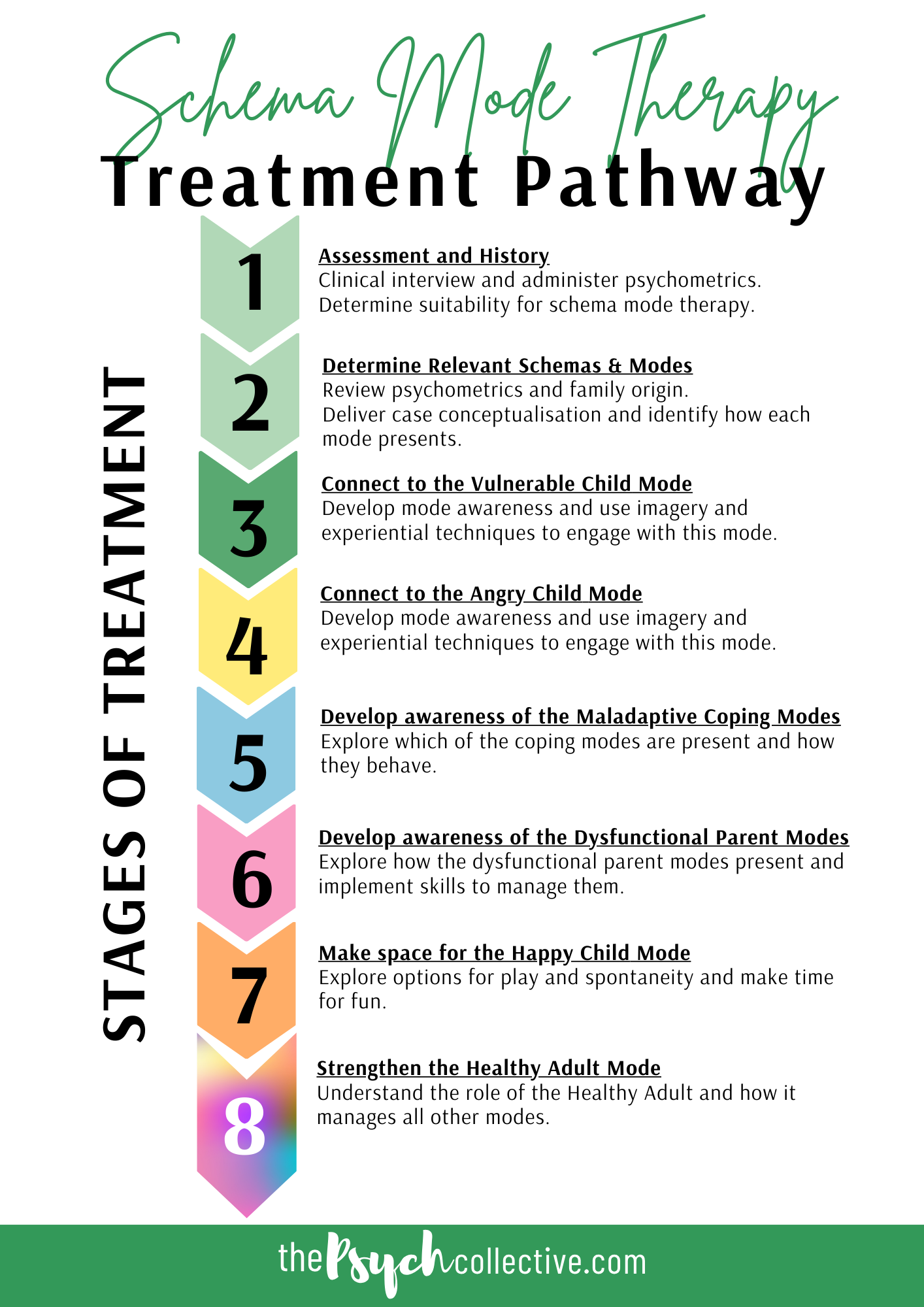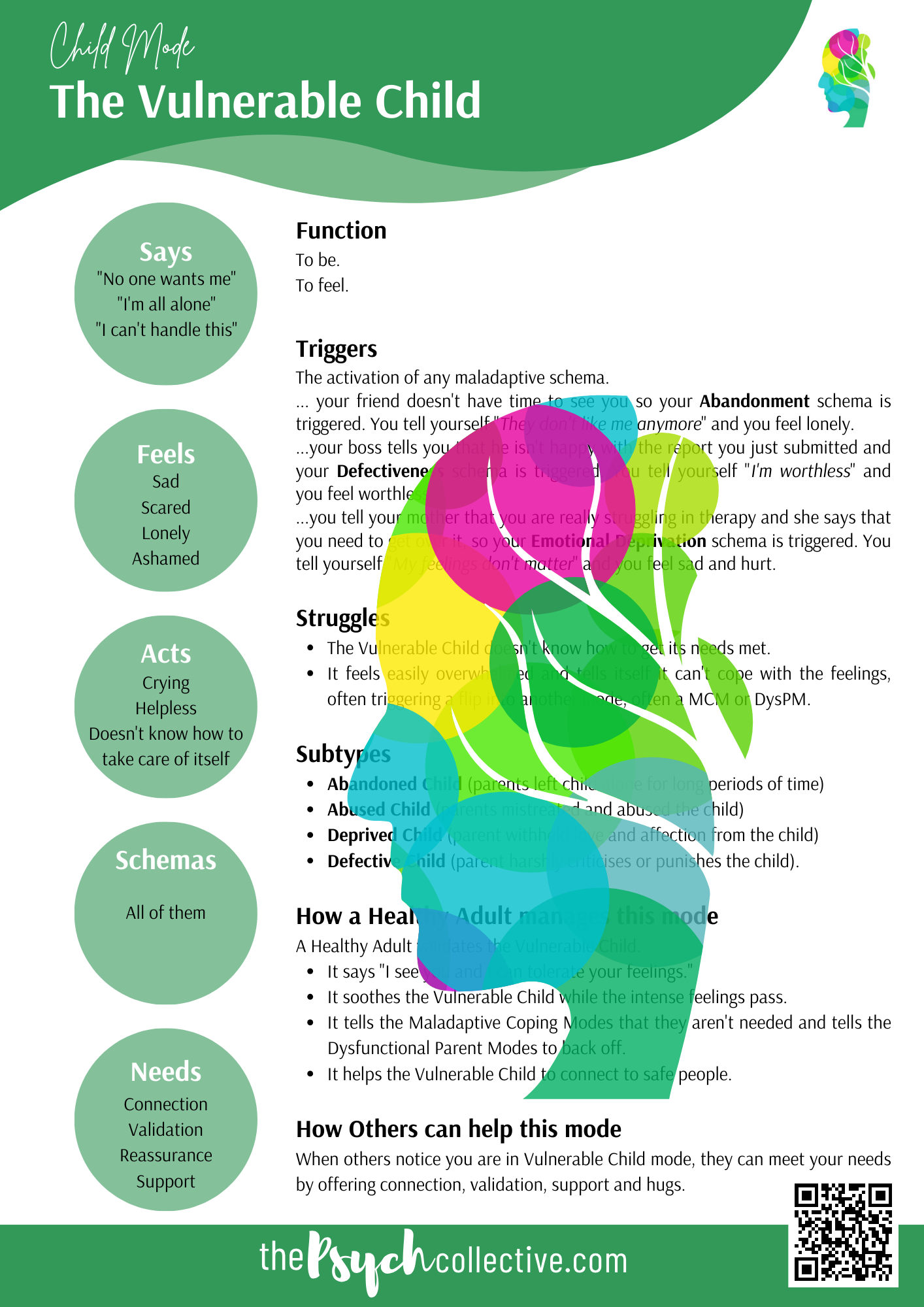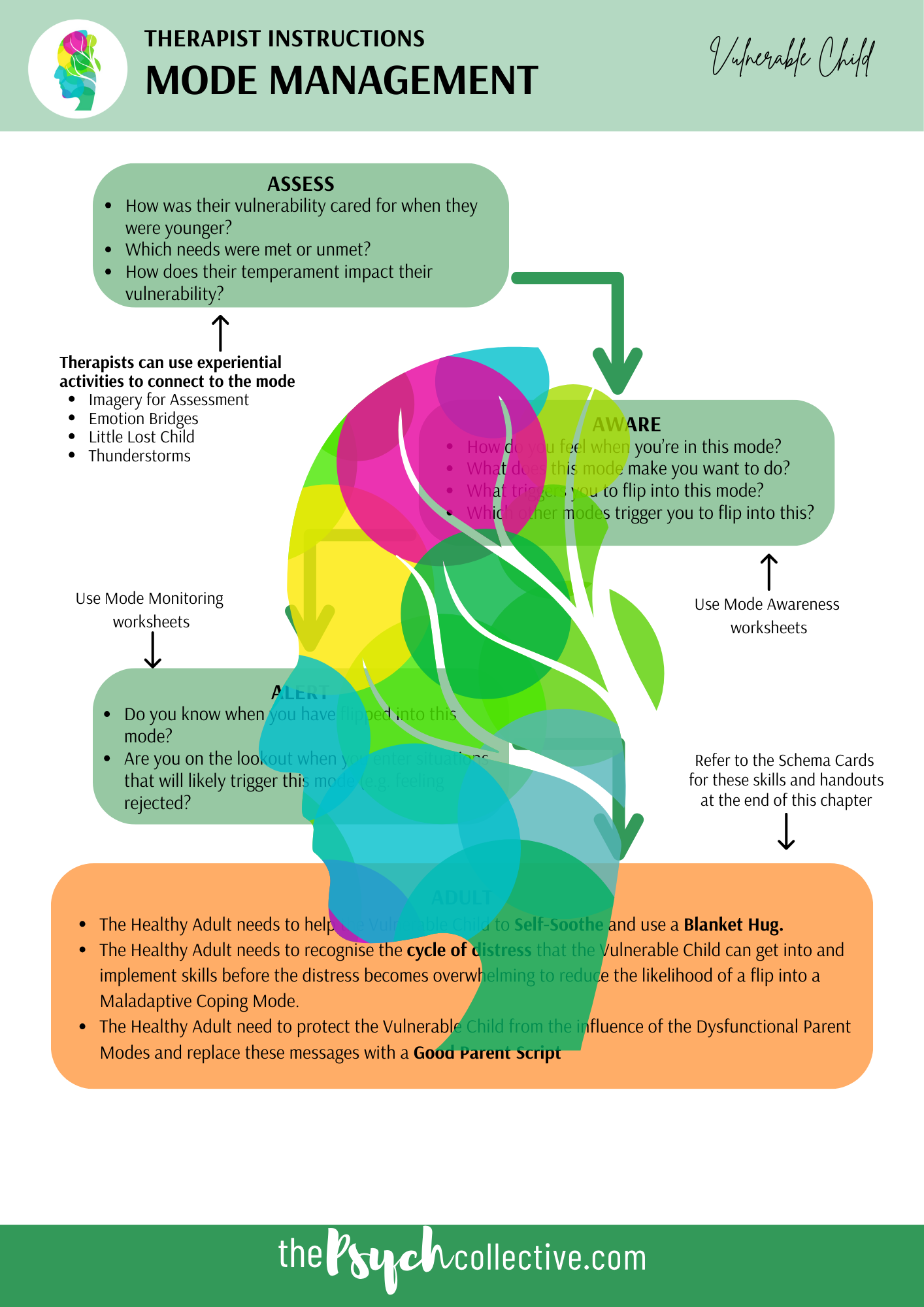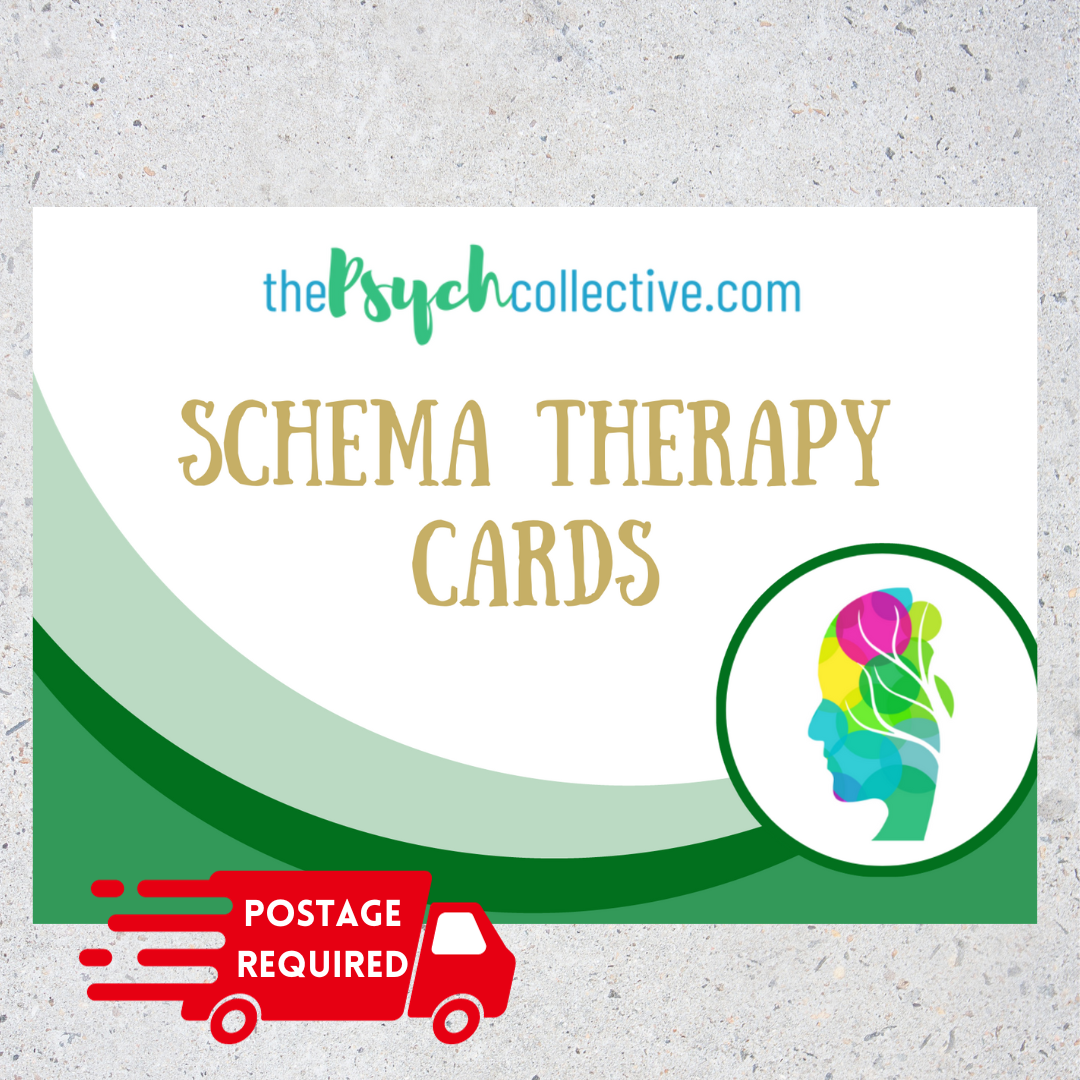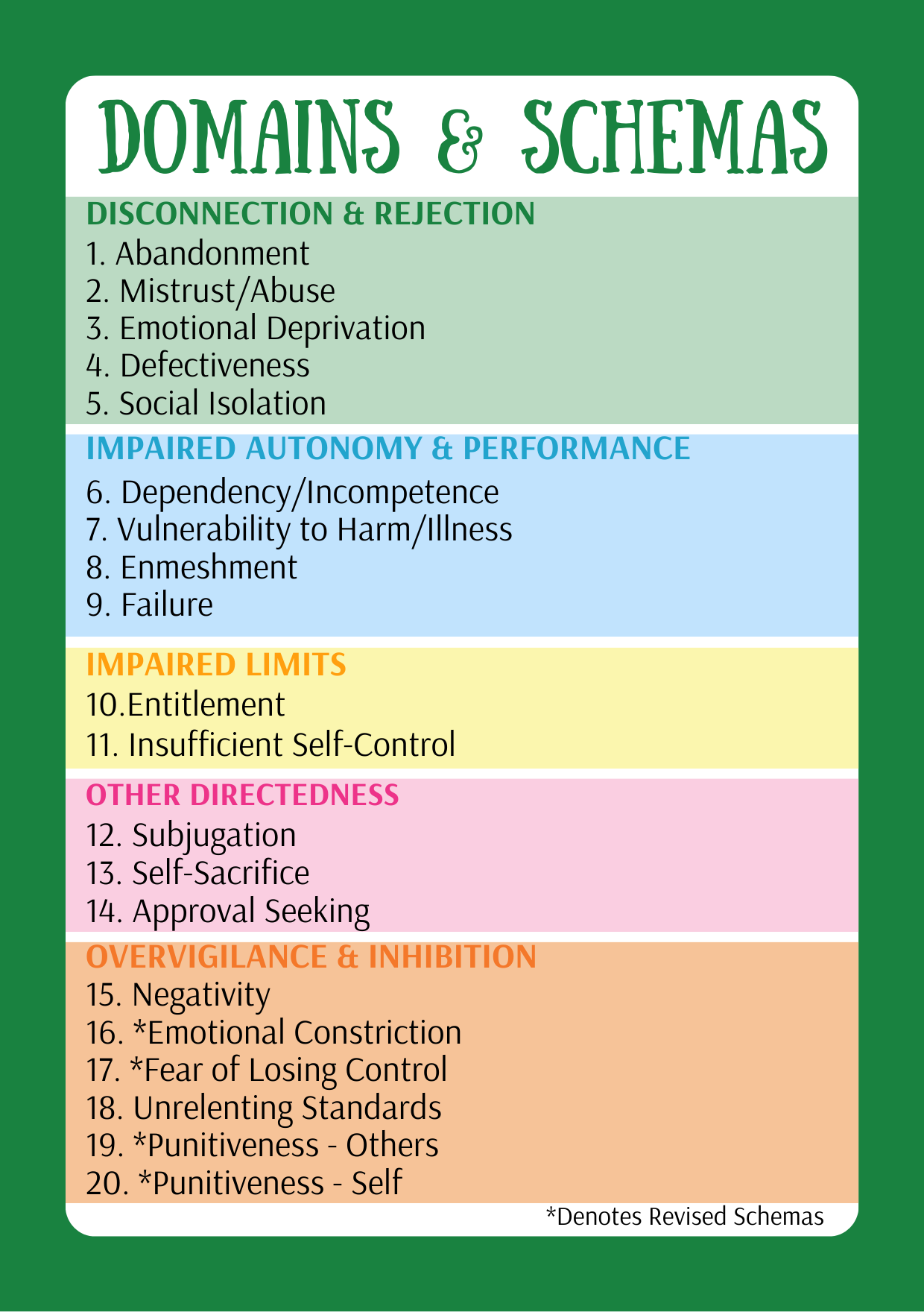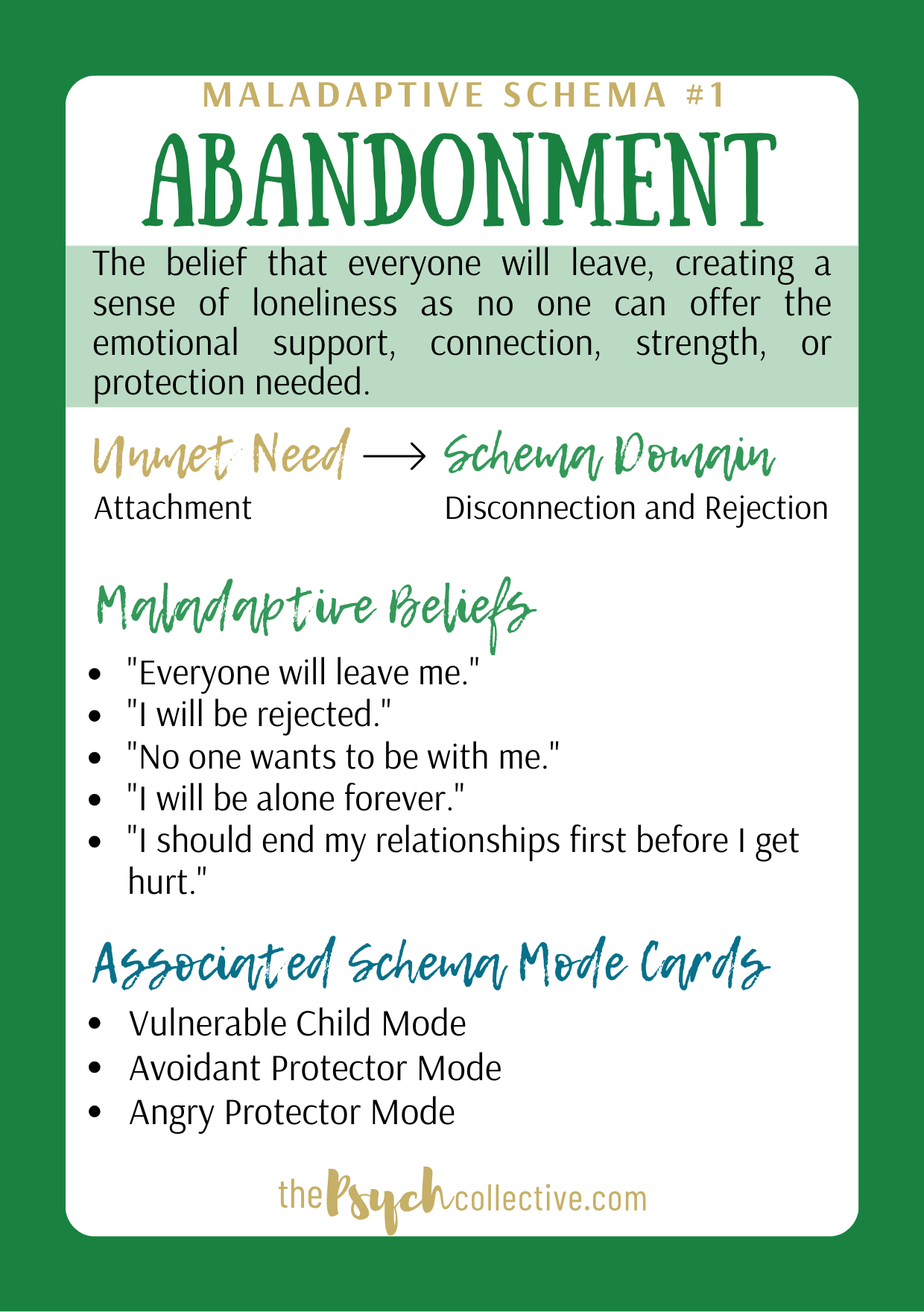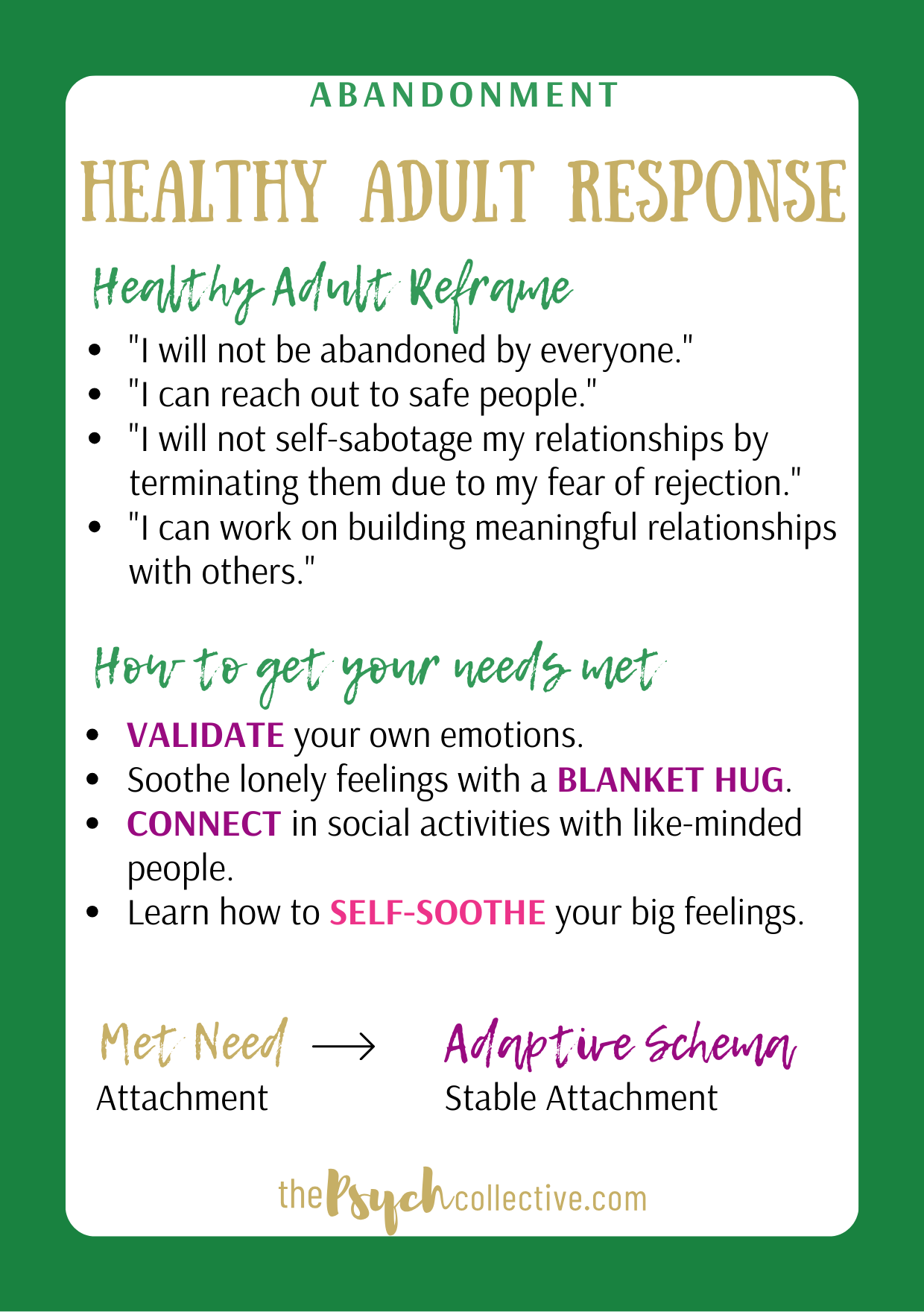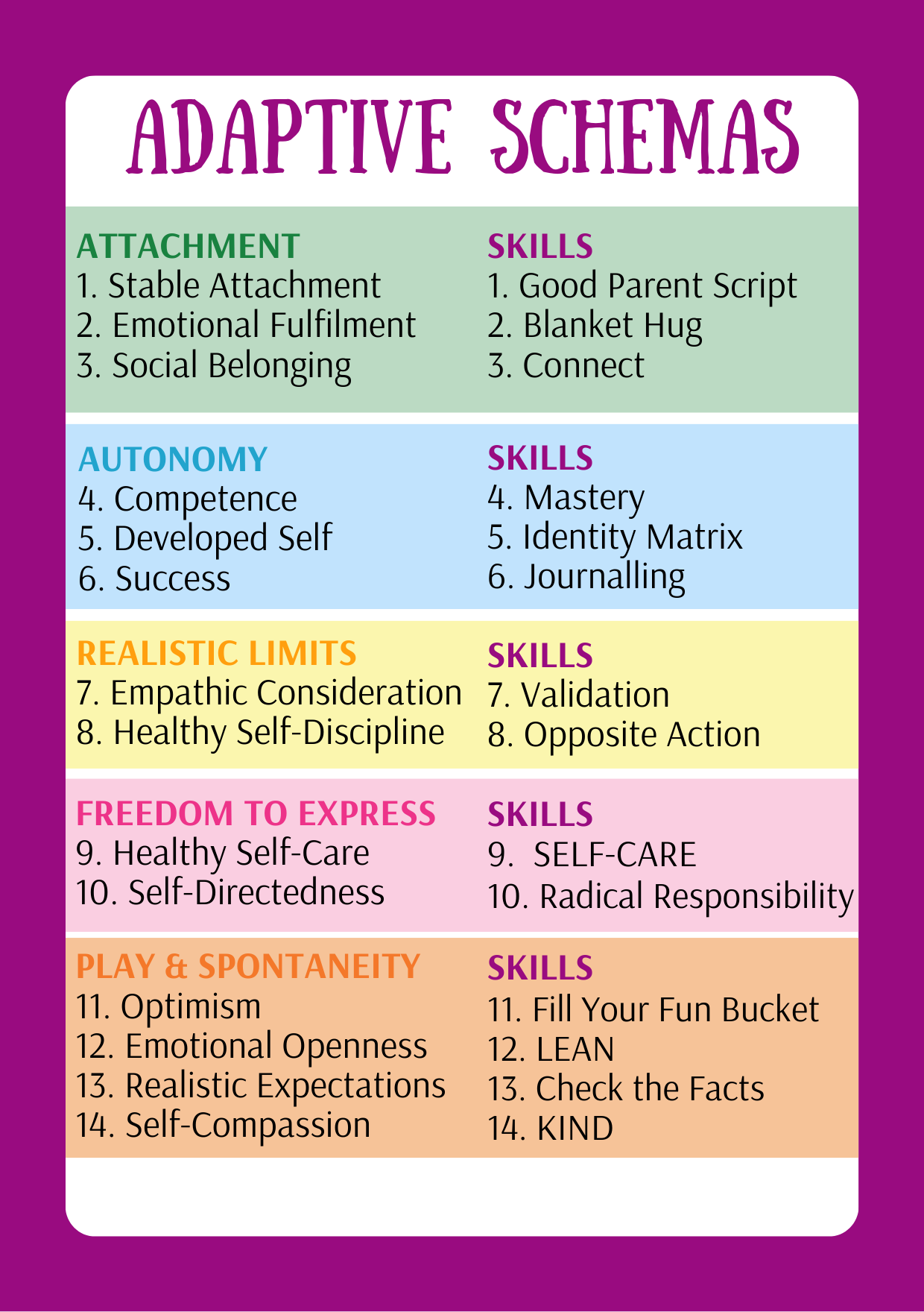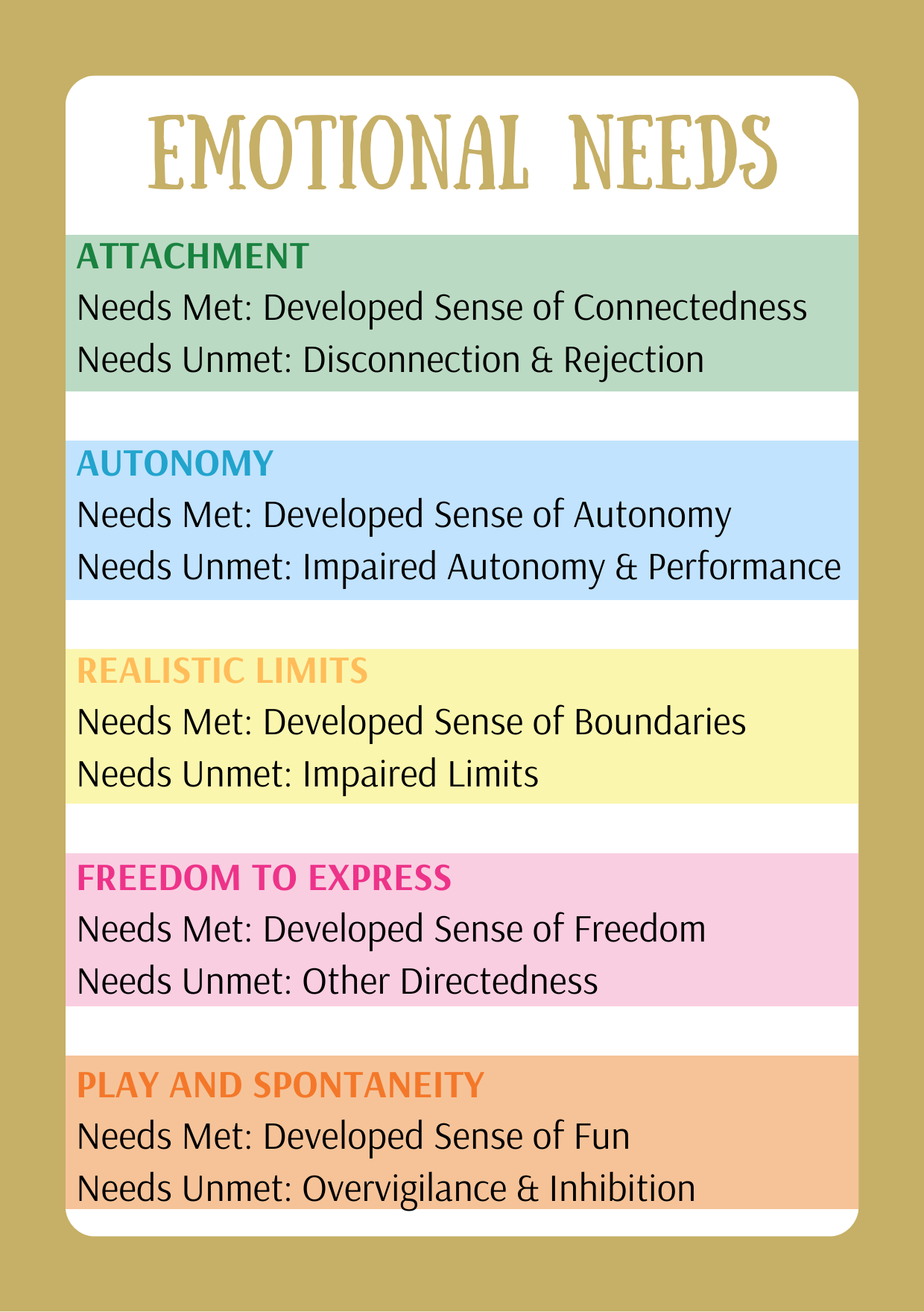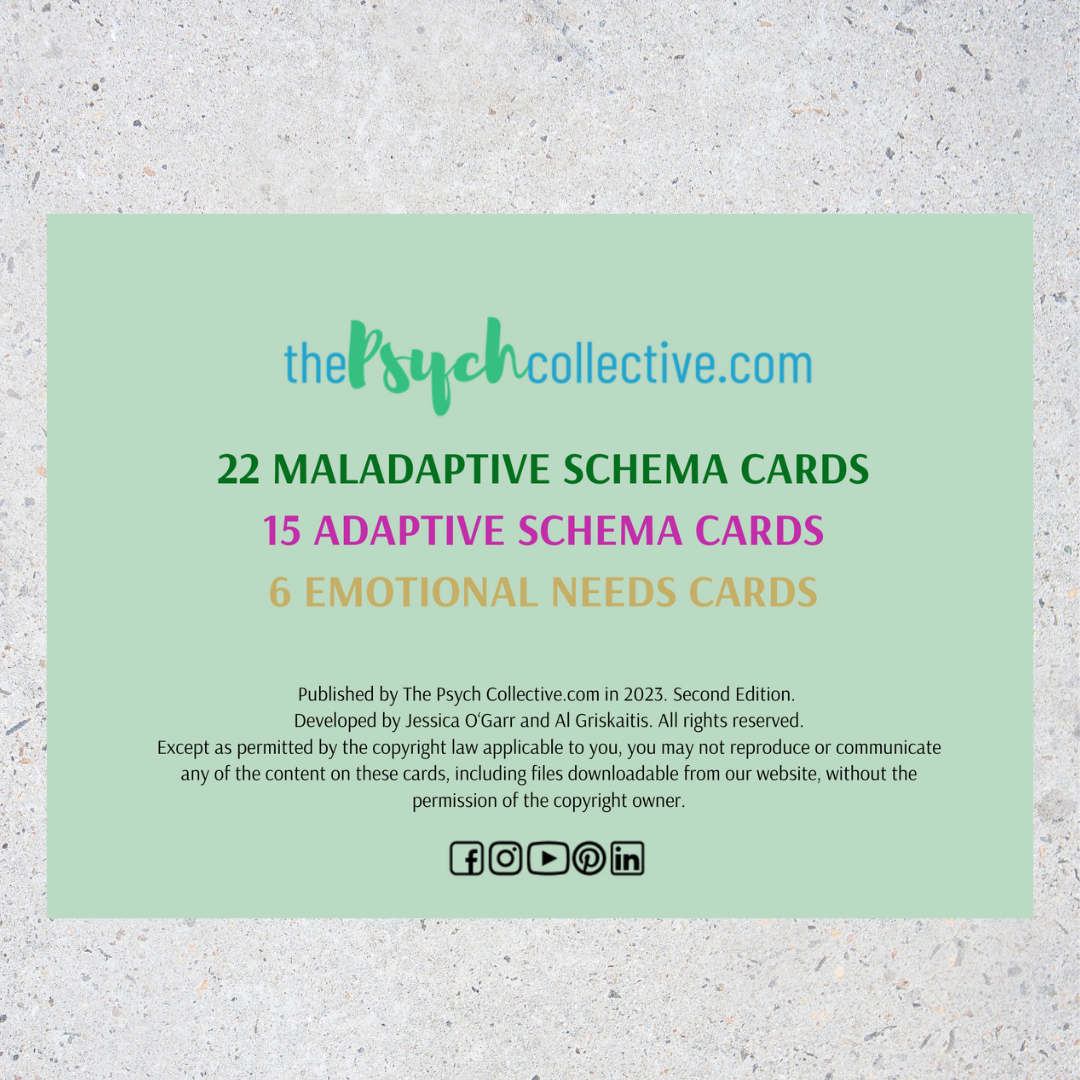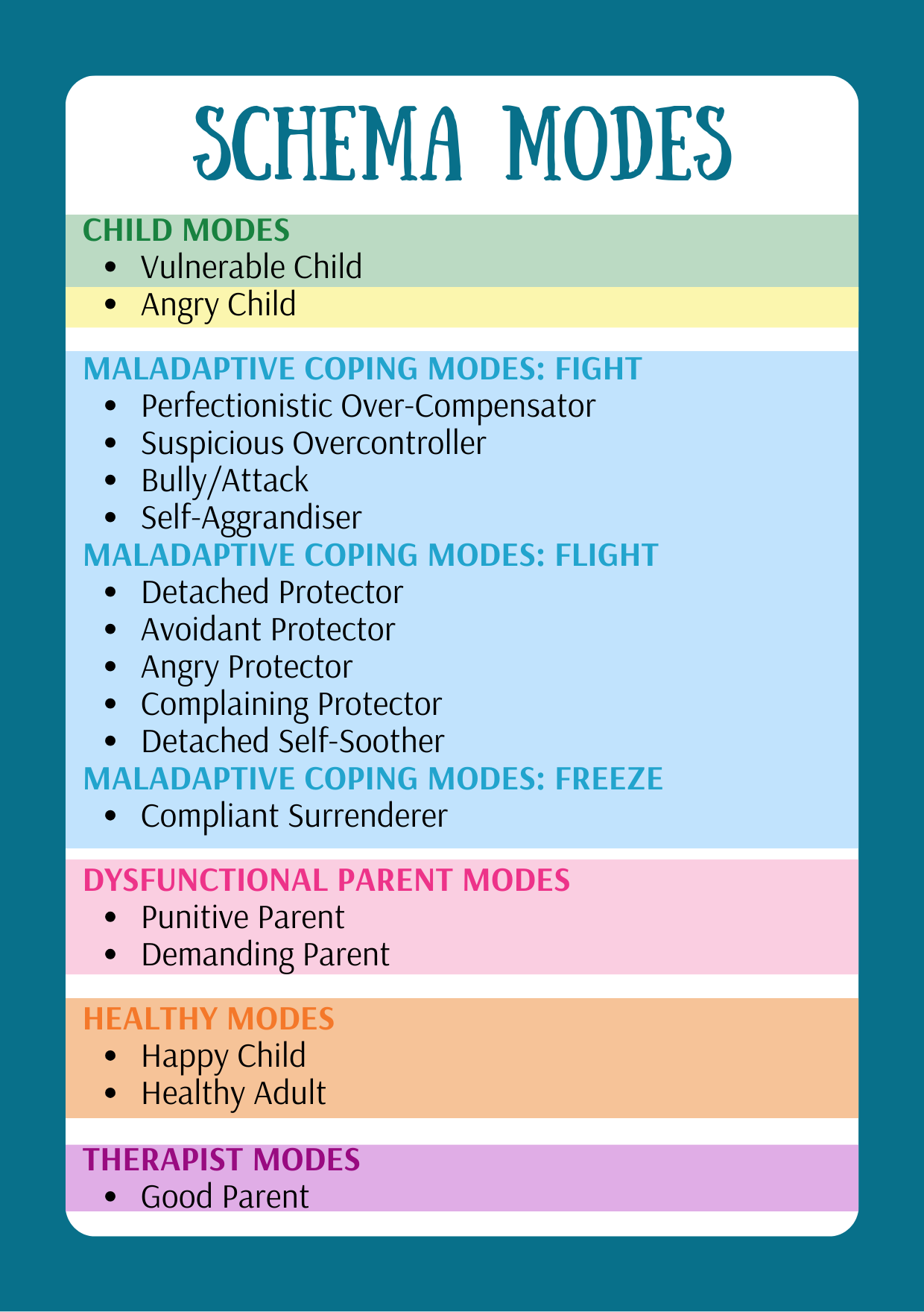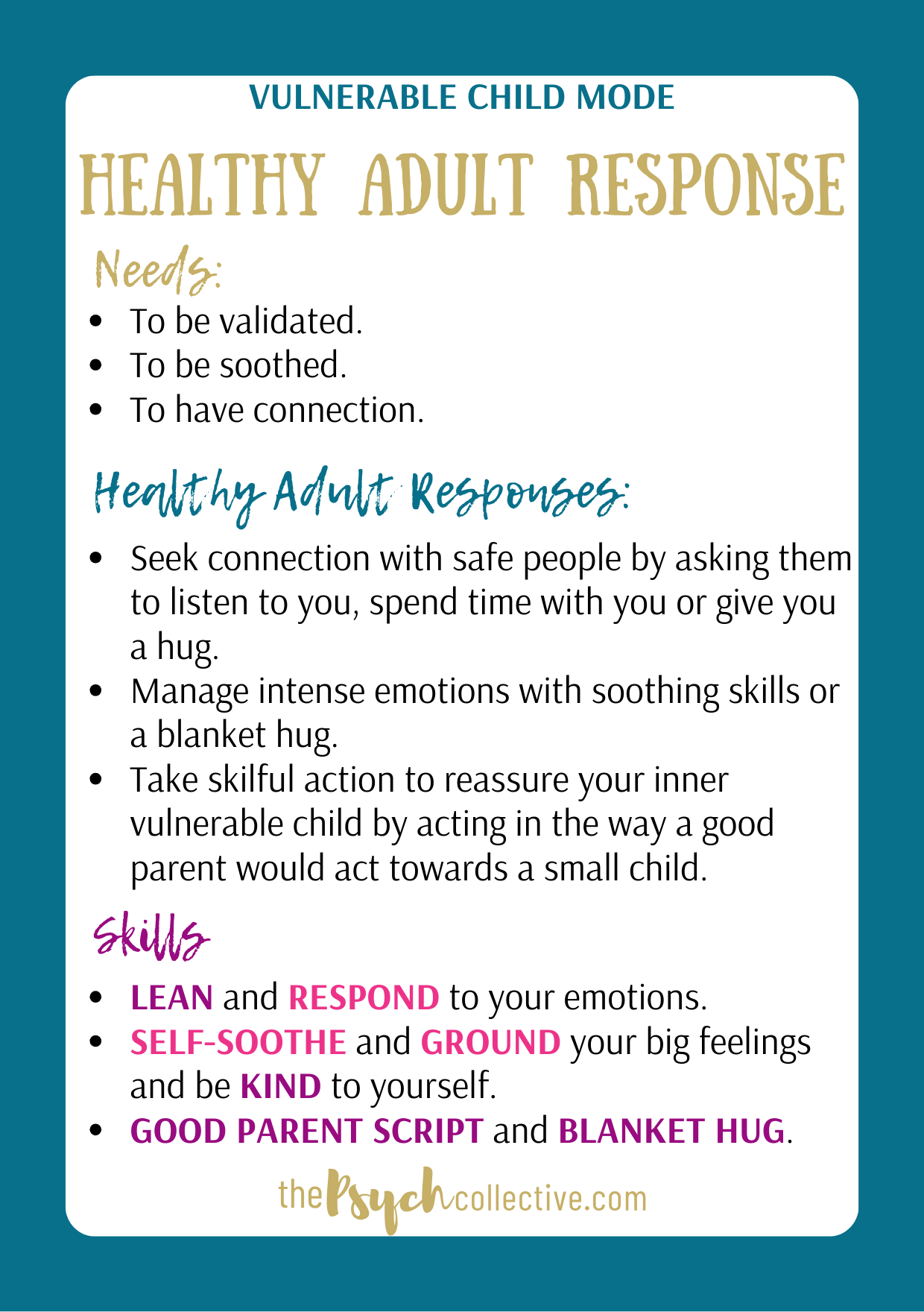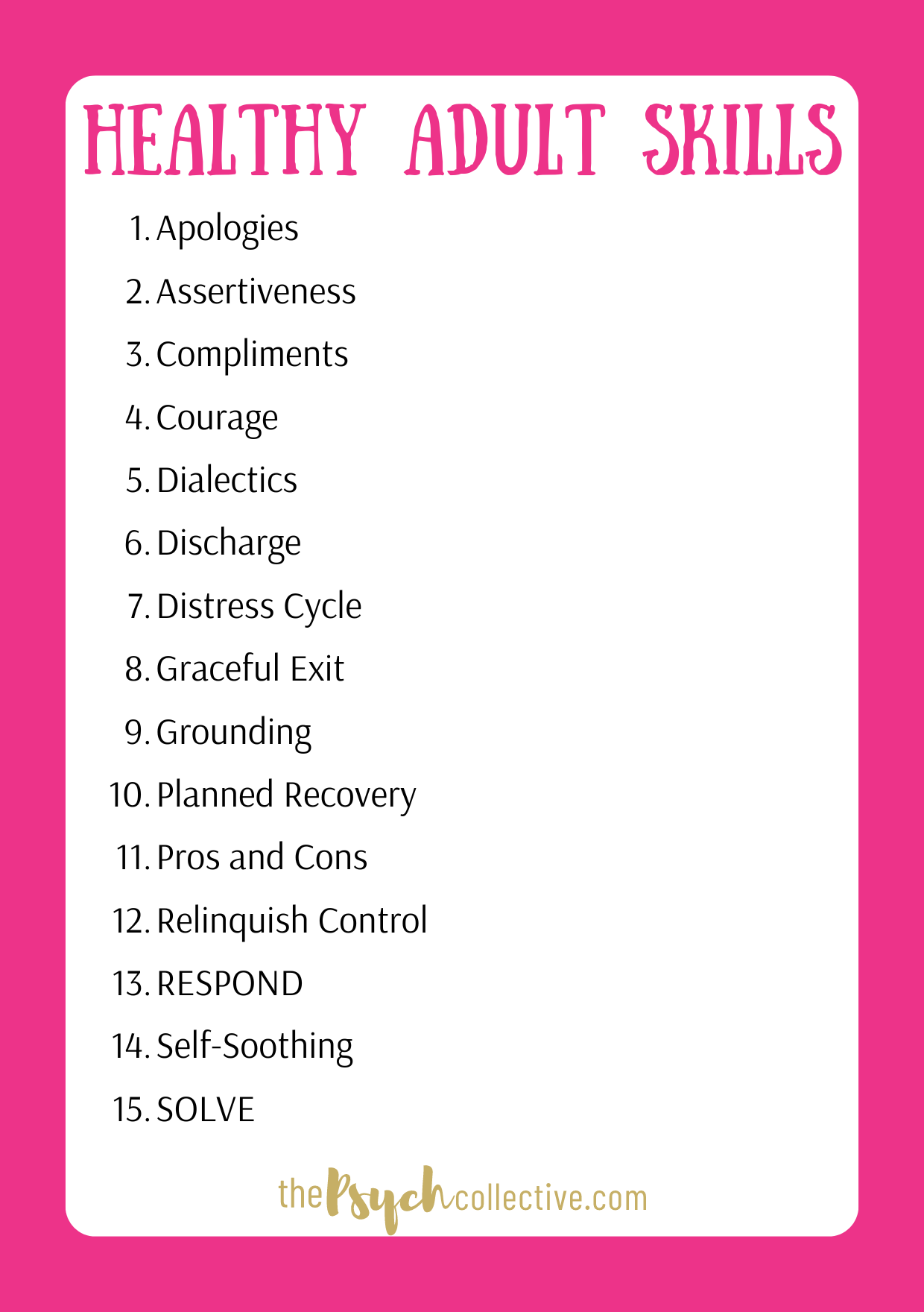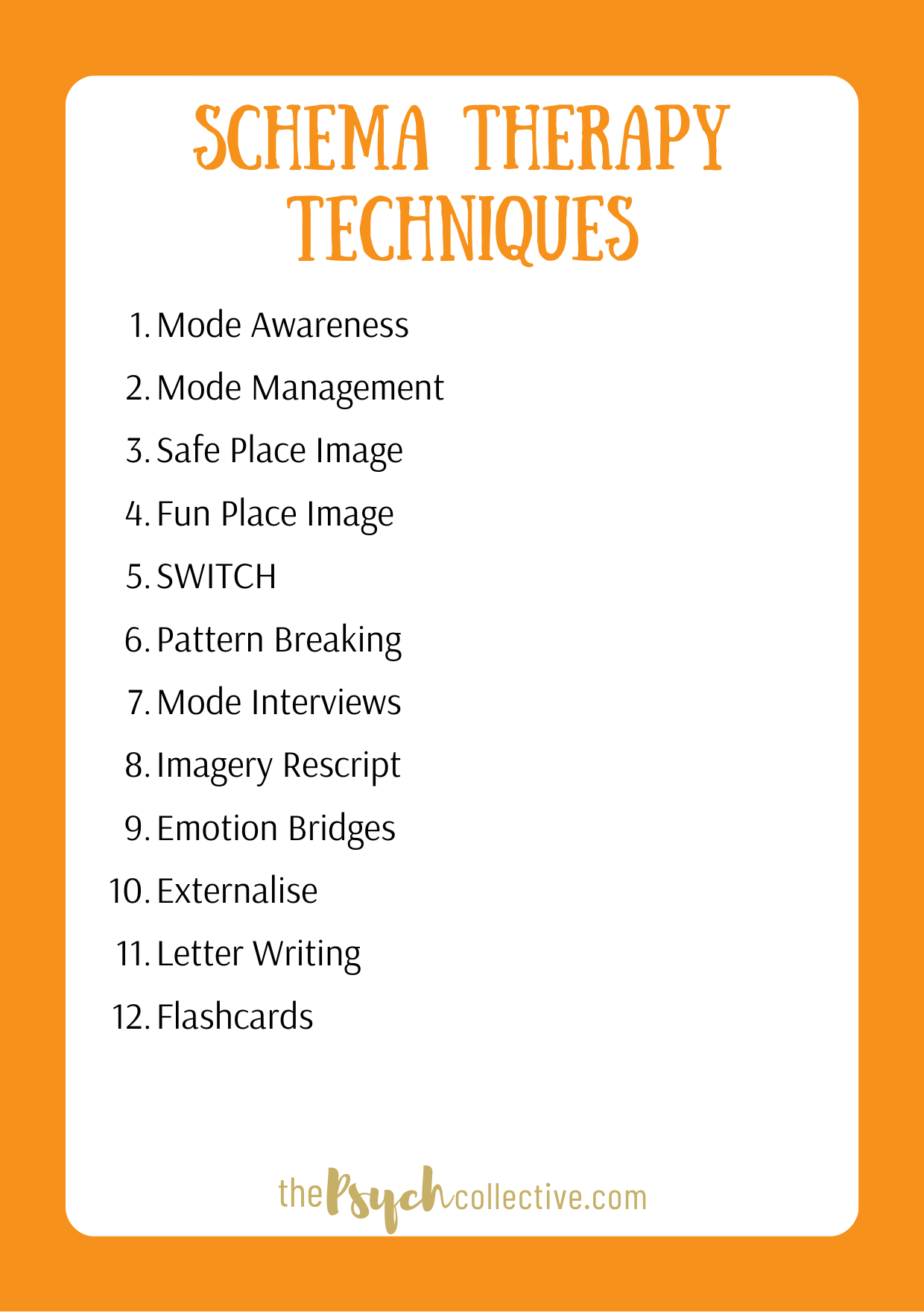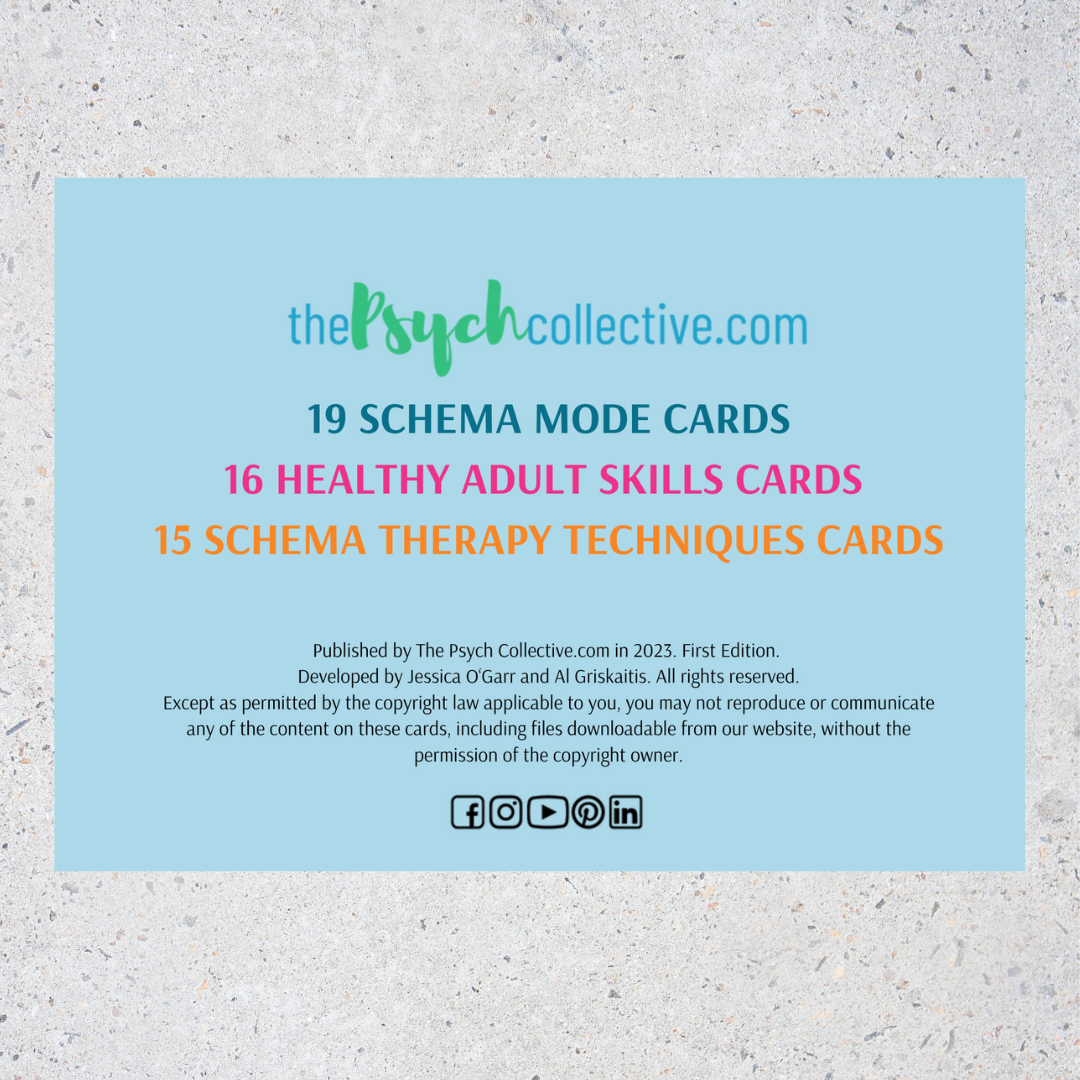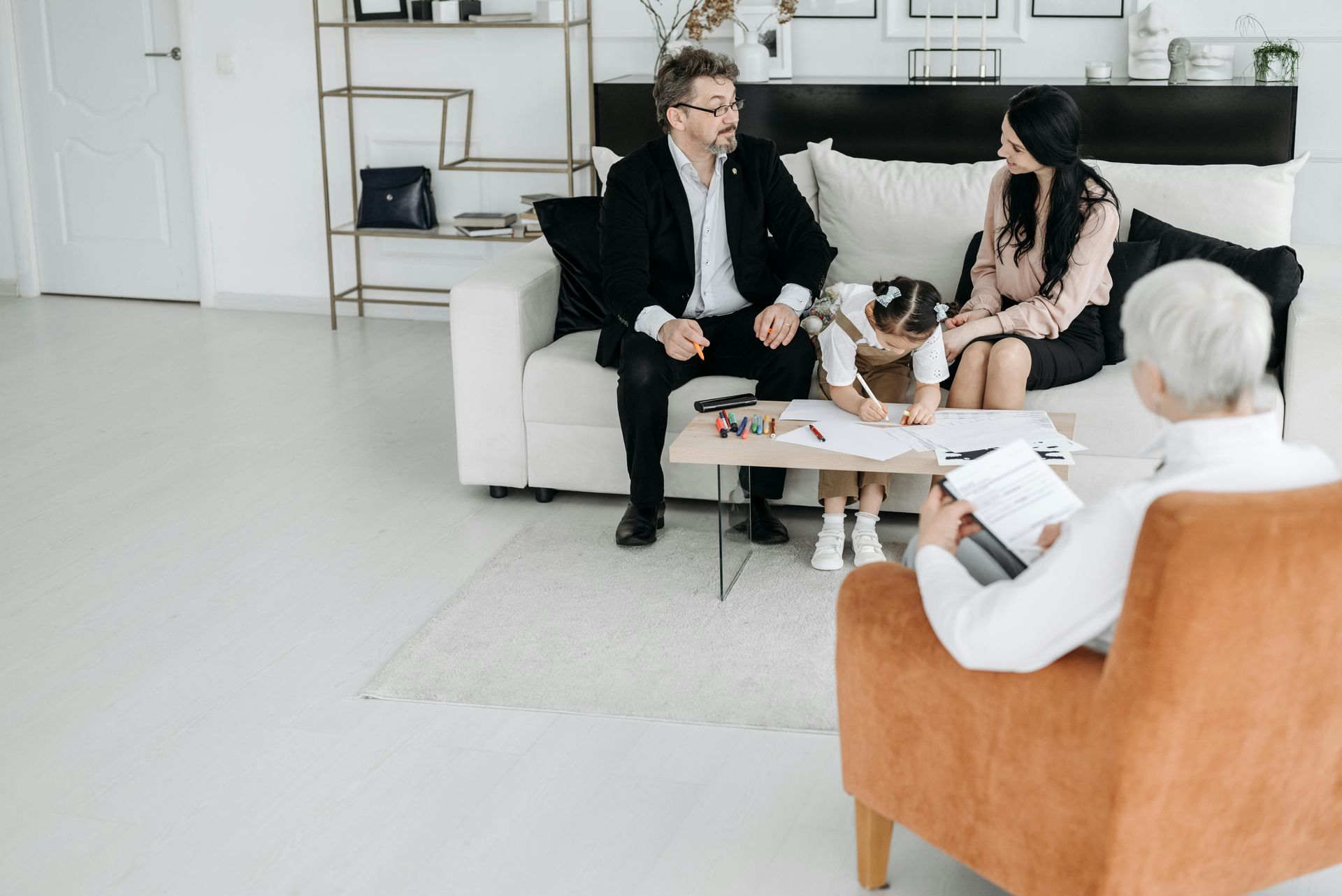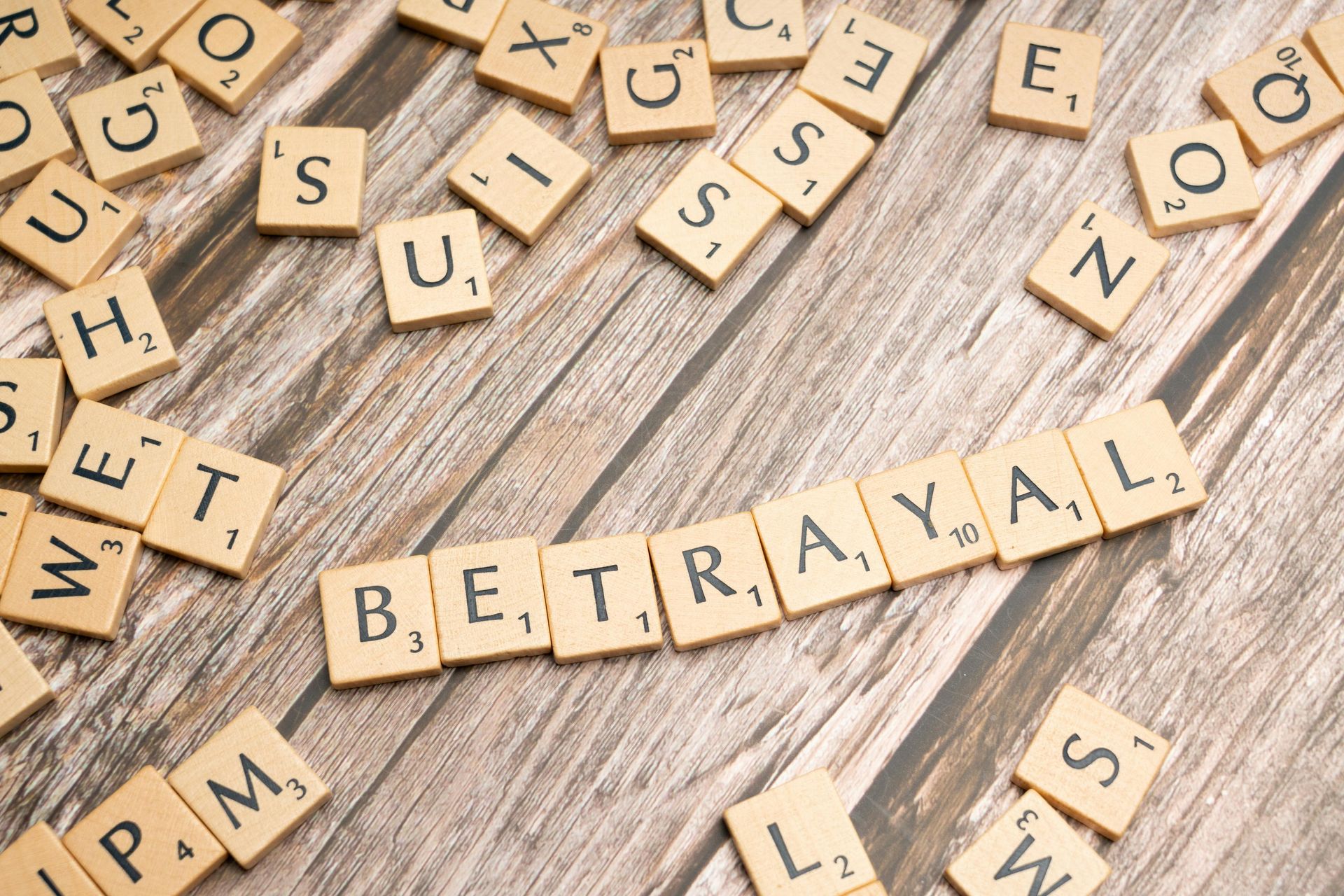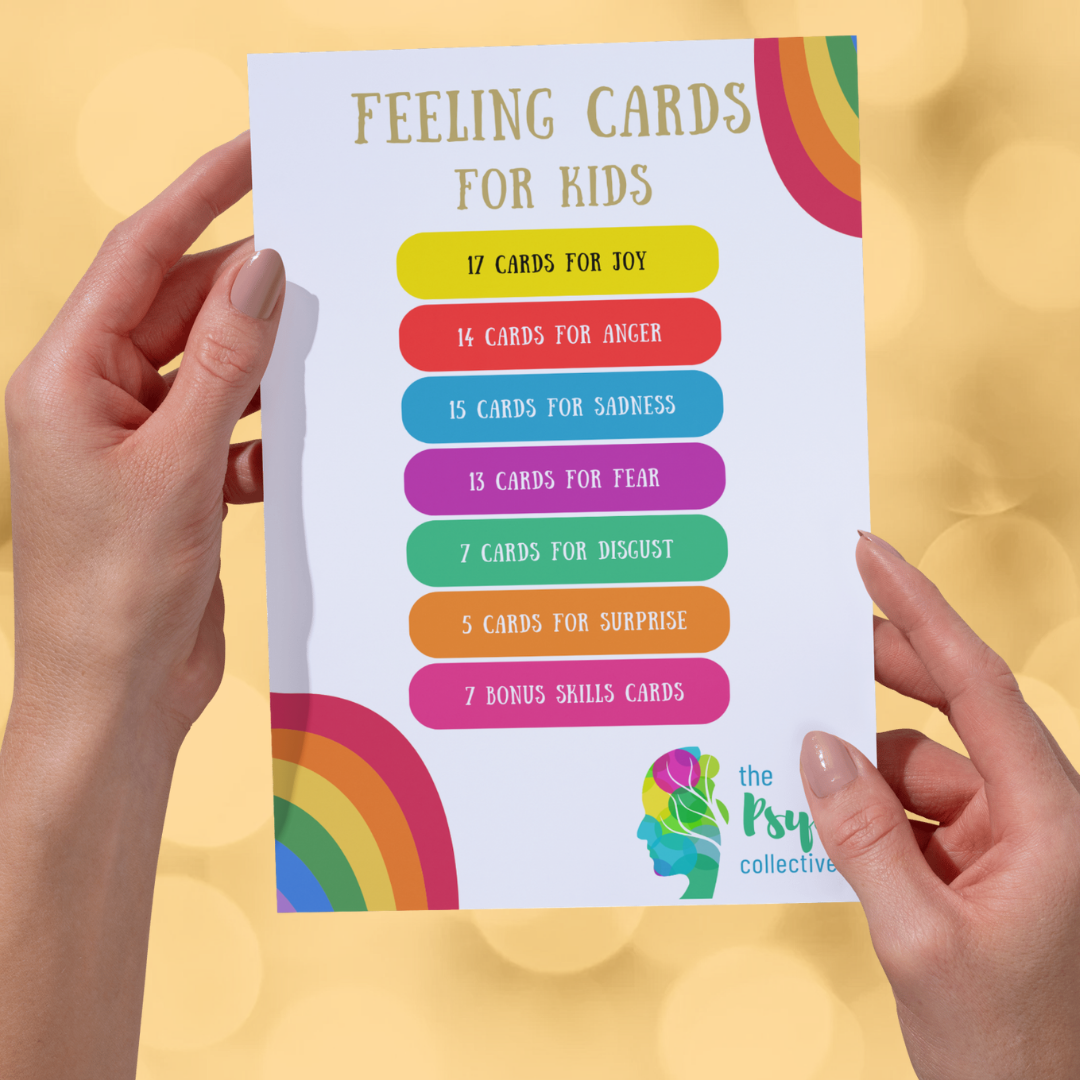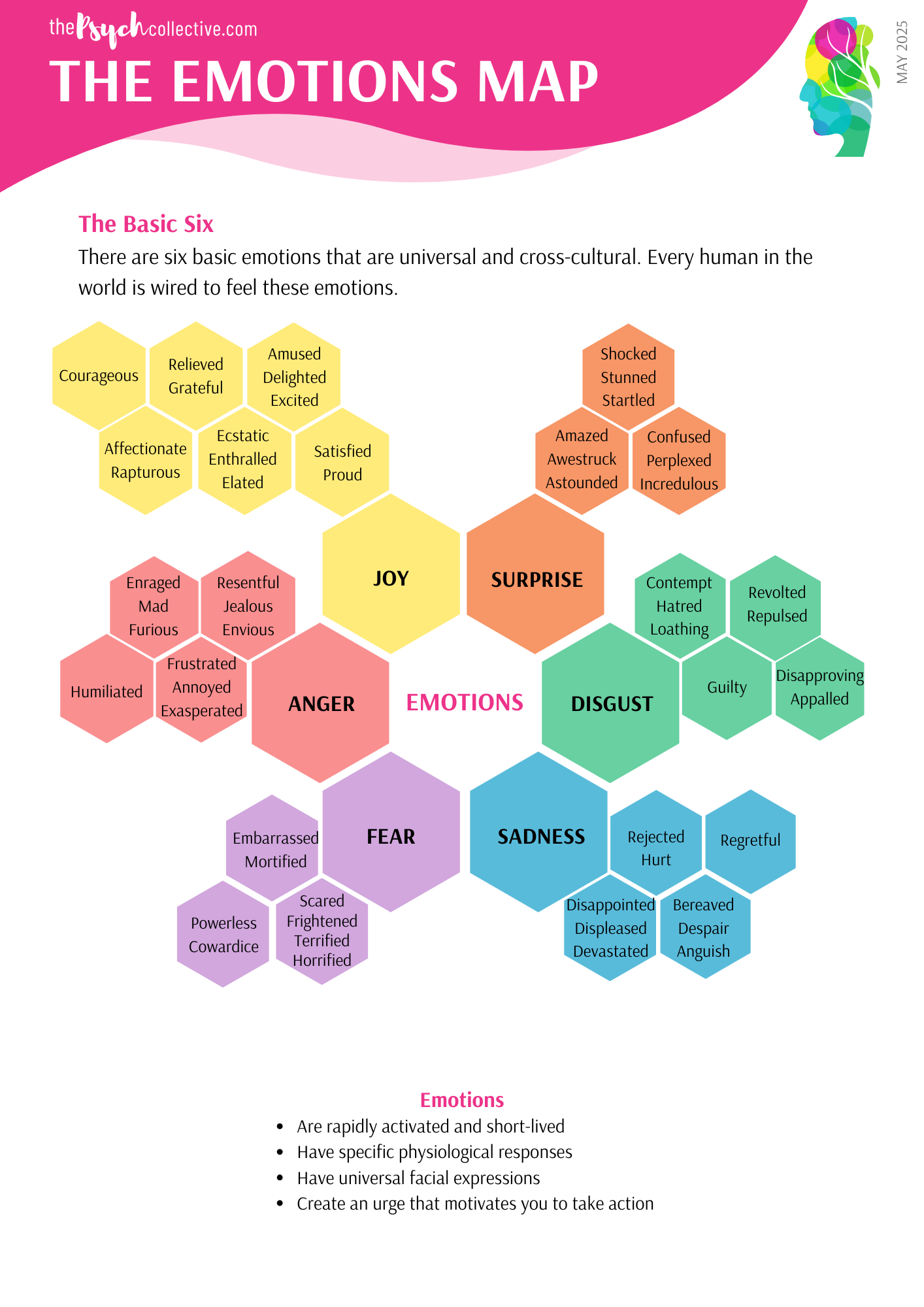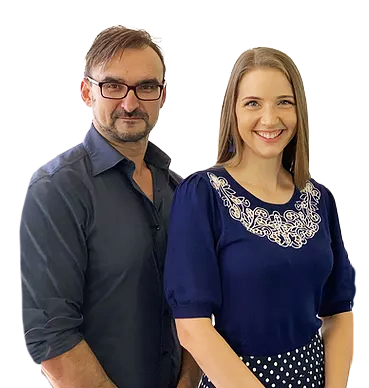Exploring our Schema Therapy Resources
Finding the right resource for your needs
I love Schema Therapy. It makes so much sense to me. I first attended a Schema Mode Therapy workshop in 2014, walking into it knowing nothing and walking out with resonating in my bones. The facilitators put us through our paces. We had to work on ourselves and participate in the experiential activities to get a feel of what we are asking our patients to do. I learnt, I cried and I left with a determination to share my knowledge with everyone. Fast forward to April 2022 and I finally released my first eBook on Schema Mode Therapy. Since then, we have created a stack of free and paid resources for Schema Therapy and Schema Mode Therapy. And with this plethora of resources, I often get asked which resources would be most suitable for people's needs.
What is the difference between Schema Therapy and Schema Mode Therapy?
This is probably the most important thing to sort out first. They are two related yet separate types of therapies.
Schema Therapy could be described as advanced Cognitive Behavioural Therapy (CBT). It makes the assumption that your early childhood needs were not met and therefore you developed negative beliefs about yourself and your position within the world. These negative beliefs (also known as core beliefs) were categorised into themes. These themes are the Schemas. Initially, Jeffery Young identified 18 maladaptive schemas and then Oz Yalcin did his PhD on reviewing the list of schemas and found that there are actually 20. All of our schema resources now use the revised list of 20.
So, Schema Therapy uses cognitive restructuring techniques to address the maladaptive beliefs associated with these schemas to create meaningful change. However, this can take a long time as these beliefs usually have been held since childhood. It is important to note that it is possible to have a healthy childhood with all emotional needs met and then have a traumatic incident in adulthood that shakes your belief system to its core, and then you develop maladaptive beliefs, though this is less common.
Schema Therapy will also use behavioural techniques like behavioural pattern breaking to encourage new behaviours or ways of responding when schemas are activated. This is similar to standard CBT.
However, Schema Therapy goes beyond traditional Cognitive Therapy because it incorporates experiential activities to manifest change by influencing feelings. It is common for a patient to reach the point where they know something isn't true but it still feels true. This is where schema therapy really excels because techniques like imagery rescripting and chair work can help to shift the feelings someone has about themselves in response to a memory or belief.
Let me give you an example of how I use Schema Therapy with a patient.
Sarah is a 42 year old mother of two who works as an Admin Manager. She takes her role very seriously and often stays up until 1am completing work tasks that she doesn't have time to finish whilst in the office. She is presenting for treatment of burnout.
We identify that her mother put a lot of pressure on her growing up to get good marks and be helpful to everyone. Sarah was taught to put others first and not be lazy. She has an Unrelenting Standards schema and a Self-Sacrifice schema.
After an assessment to understand why she has come to therapy and what her upbringing was like, we used the YSQ-R questionnaire to identify which schemas were strongest. Then we made a plan to tackle them.
Sarah downloaded the Schema Therapy workbook to understand more about her schemas and to complete the self-reflection worksheets for homework. We then used the Schema Awareness pages together to go through this in more detail (from the Treatment Guide eBook). Once Sarah had an understanding of her schemas, we started to use the Schema SWITCH worksheet to plan an alternative way of thinking about her perfectionism and people pleasing.
We talked about ways of setting boundaries and saying no. We also discussed ways of talking to her boss about her workload which she had been hiding for fear of getting into trouble. From this, we used the Behavioural Pattern Breaking worksheet to plan a behavioural experiment to see what would happen if she started to say no at work.
Sarah was making good progress with her self-talk and was setting some boundaries, but she still felt like she was going to disappoint someone. So we used chair work to imagine that her younger self was sitting in the chair next to her and was feeling the pressure from Mum to always perform at a high level and take care of others. With my coaching, she spoke to her younger self to reassure her that she would not be rejected for taking time out for self-care. We also brought her mother into the image and talked to her about how her expectations were unrealistic and she needed her mother to love her for being kind and loving, rather that for her output and performance. From this, Sarah was able to let go of the guilt she felt about taking time for self-care and saying no to unreasonable requests.
Schema Mode Therapy uses similar approaches but it conceptualises the situation in a slightly different way and is more useful with complex presentations. Schemas are the beliefs that one holds about themselves and the world. Schema Modes are the expression of those schemas when they are activated. The modes represent the emotional and behavioural responses that play out in the moment when the schema is triggered. These responses can flip rapidly and thus this therapy looks at the bigger picture and needs to consider all relevant modes at once. Our resources talk about 17 different modes. However, the labels for the modes can be personalised as long as they always include Child Modes, Maladaptive Coping Modes, Dysfunctional Parent Modes, and Healthy Modes.
Schema Mode Therapy still uses cognitive, behavioural and experiential techniques, but it has a greater emphasis on the experiential work, and incorporates more limited reparenting, which is when the therapist emulates the role of the Good Parent to give the patient the experience of being cared for by a parental figure who cares about them and teaches them how to get their emotional needs met (within the boundaries of an appropriate therapeutic relationship).
I use Schema Mode Therapy on myself. My Healthy Adult regularly has chats with my Vulnerable Child to make sure she is travelling okay and set limits on my Perfectionistic Overcompensator who always tries to overdo any project. I have to set limits with my Demanding Parent about the expectations are on my time and resources and make sure I allow time for my Happy Child to play otherwise I will burn out.
To see this in action, check out this video:
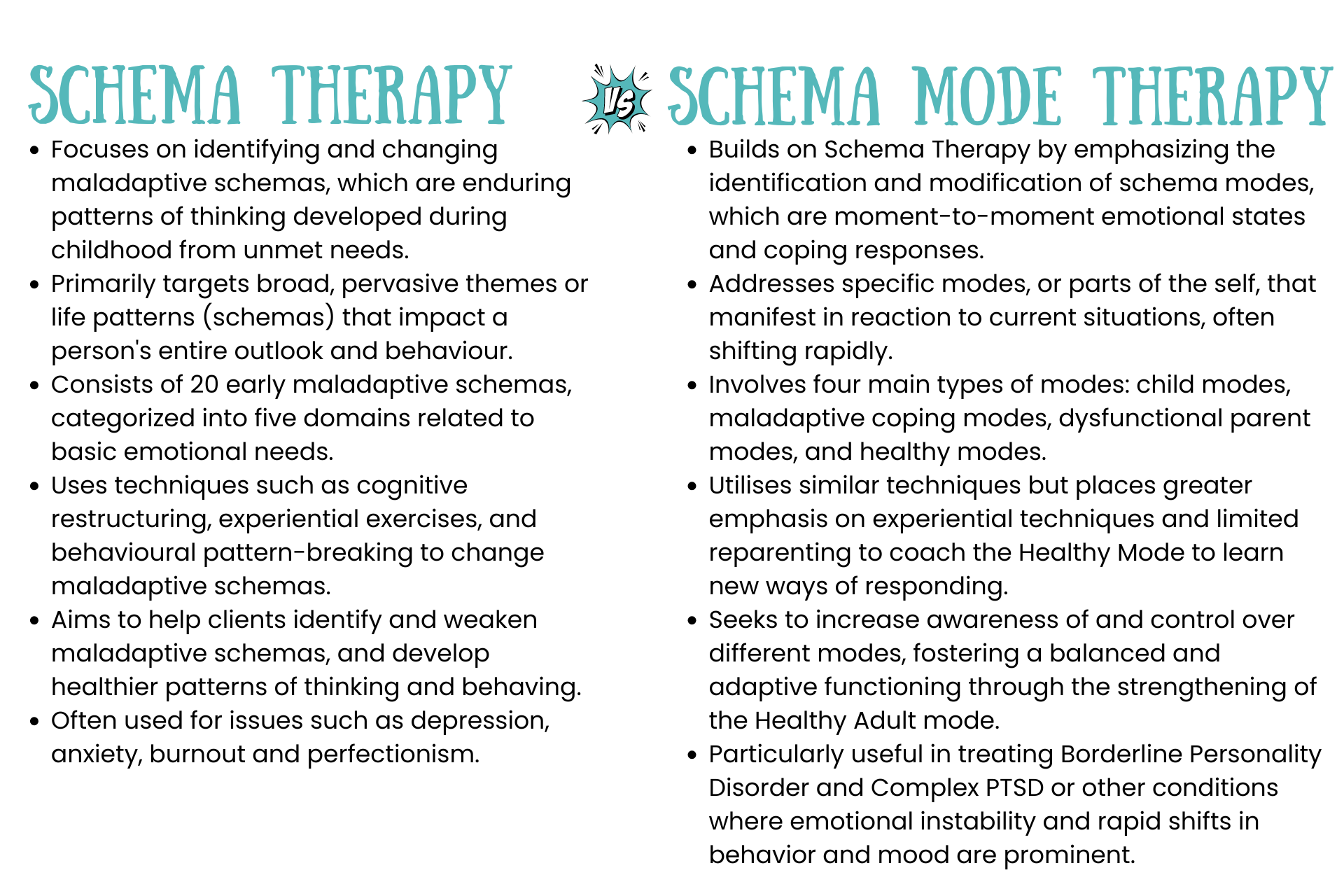
Want to learn more?
To help you with your journey through either Schema Therapy or Schema Mode Therapy, we have developed a range of resources. Some of them are written for patients, some are directed more at therapists and others are designed for both.
Schema Therapy
The Complete Set of Worksheets
This resource has been developed for patients (and therapists) who want to learn more about each of the 20 maladaptive schemas. It has a page per schema and discusses the what the schema is, how it develops, which need it relates to and what the Healthy Adult response would be. On the back of each worksheet is a self-reflection page for you to consider how this schema shows up in your life.
It also includes the 14 adaptive schemas, giving a definition and description of each, along with self-reflection questions to consider how you can strengthen these schemas.
This workbook is designed to enhance your understanding of schemas but does not include skills
Schema Mode Therapy
The Complete Set of Worksheets
This workbook focuses on the 17 schema modes. If gives a detailed description of each of the schema modes and the mode diagrams explain the maladaptive and adaptive distributions. On the back of each page is a worksheet for Mode Awareness and Mode Management. At the end is a Health Adult Mode Map for you to plan your management plan for each mode.
This workbook will give you some ideas on what needs to be done to address each mode but does not go into details of how to implement the skills.
Schema Therapy
Treatment Guide
This eBook was written for therapist who have been trained in Schema Therapy, but there is no reason that patients can't read it too.
This eBook is designed to support people who are undertaking Schema Therapy and it explains the steps involved, including assessment, education, skills, creating change and leveraging adaptive schemas. It includes patient worksheets that are only available in this eBook and scripts for the therapist on how to facilitate the experiential activities.
As a therapist, this is your road map to Schema Therapy. As a patient, this will help you develop an understanding of how your treatment is supposed to be progressing.
Schema Mode Therapy
Treatment Guide
This is the pièce de résistance.
This is the one I am most proud of.
Again, it is written for therapists, but it won't hurt a patient.
Schema Mode Therapy has so many moving parts. So this workbook includes factsheets about each mode that are different to the ones in the Complete set of Worksheets. It also includes a flowchart for every mode to teach you how to implement the skills and in what order.
There is a small amount of overlap between this and the Schema Therapy Treatment Guide, but that is because some of the techniques are similar with a different emphasis, so this eBook has the modified scripts and worksheets for the modes.
And it's huge - 134 pages.
Schema Cards
These are my favourite resources to use with patients because they bring Schema Therapy to life.
Because there are 20 maladaptive schemas, 14 adaptive schemas, 5 needs and 17 modes, that is a lot of moving parts to keep in your head at once. So these cards allow me to make Schema Therapy tangible.
They also include the skills, which makes them actionable and bite-sized, removing some of the overwhelm some people feel when facing this therapy.
Box 1 includes:
20 maladaptive Schemas
14 Adaptive Schemas
5 Needs plus an instruction sheet
Schema Modes Cards
Expansion Pack
Some people are only interested in the schemas and don't bother with the modes, hence we offer the flexibility to just get the cards you need.
However, the back of each maladaptive schema and Mode card includes a list of skills to use to manage that schema/mode. These skills are coloured either purple or pink.
The purple skills cards are in Box 1 and the pink skills cards are in Box 2 (this one), so to fully benefit from the actionable content, we suggest buying both boxes.
Box 2 includes:
19 Schema Modes
16 Healthy Adult Skills
15 Schema Skills including flashcards.
They are a physical product and can be shipped all over the world.
Check out the video below to see how I use them.
Share
Categories
About Our Resources
We offer actionable resources and teach real skills to help people make meaningful change in managing mental health issues through different modes depending on people's learning preferences including infographics, text, worksheets, handouts and video.
